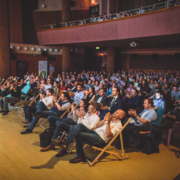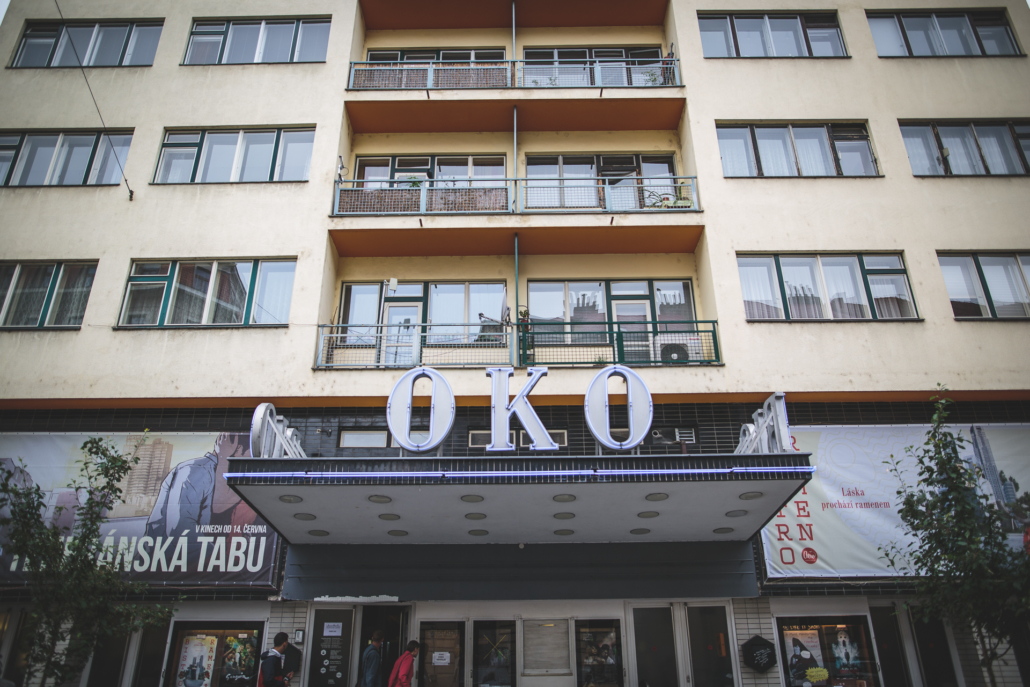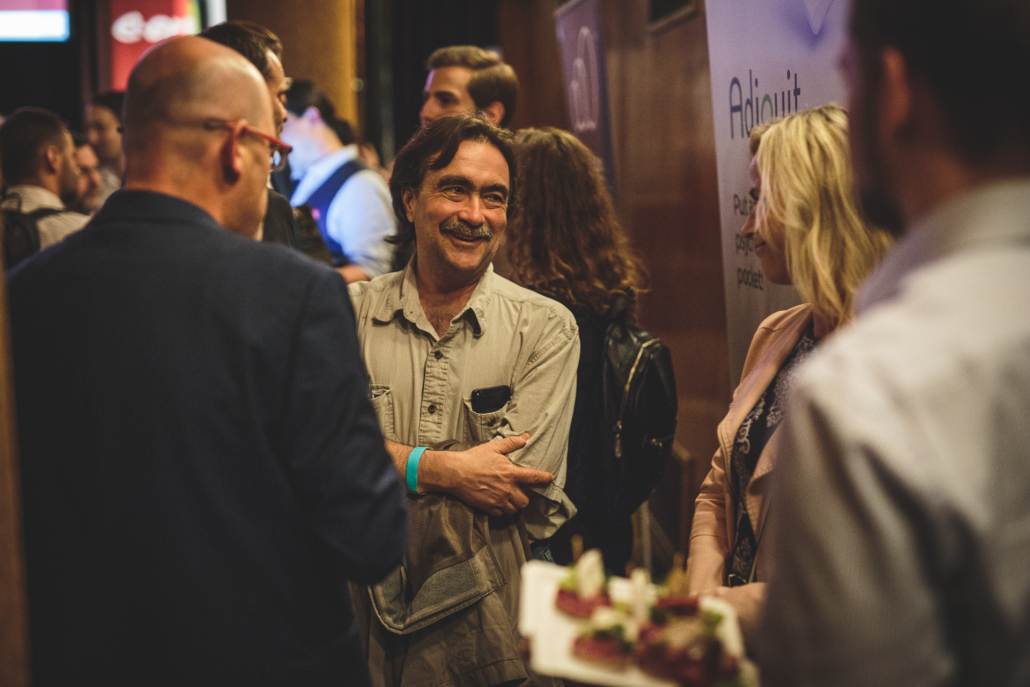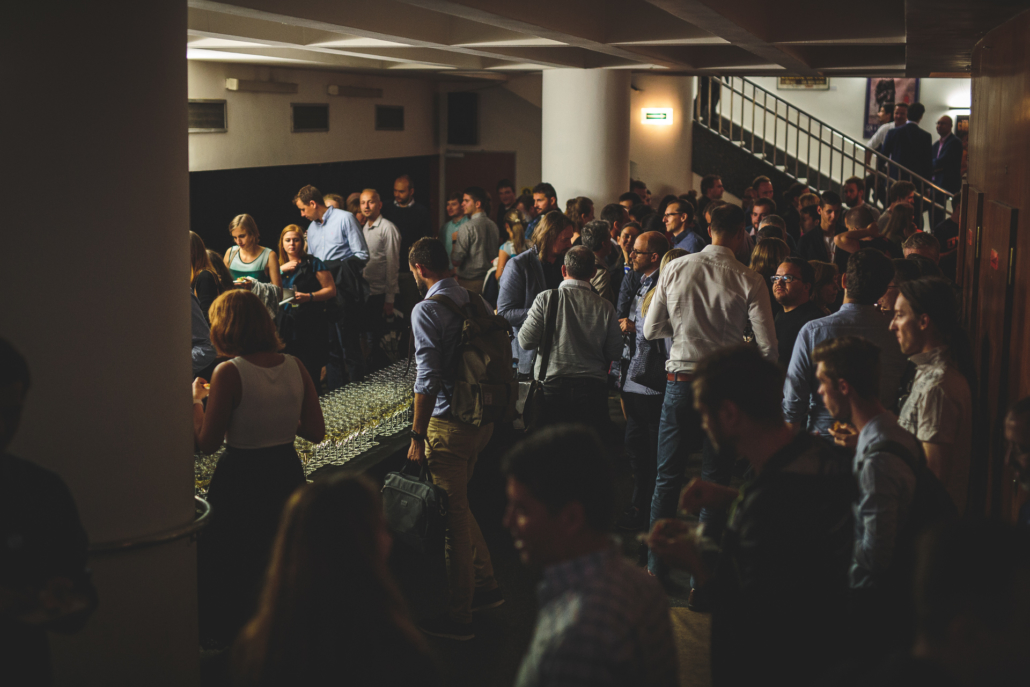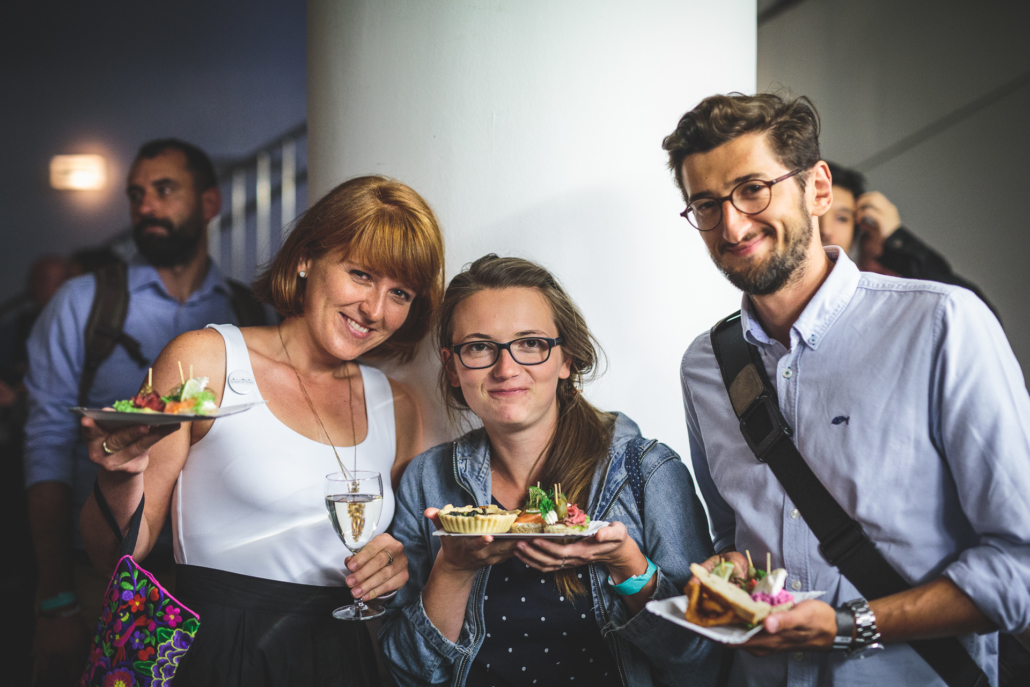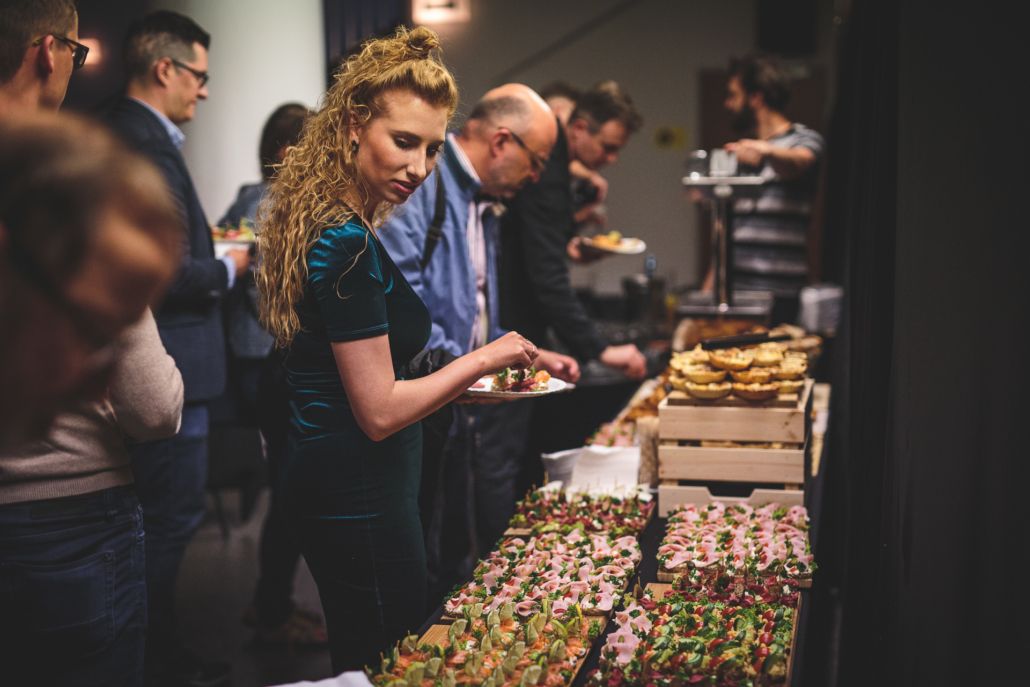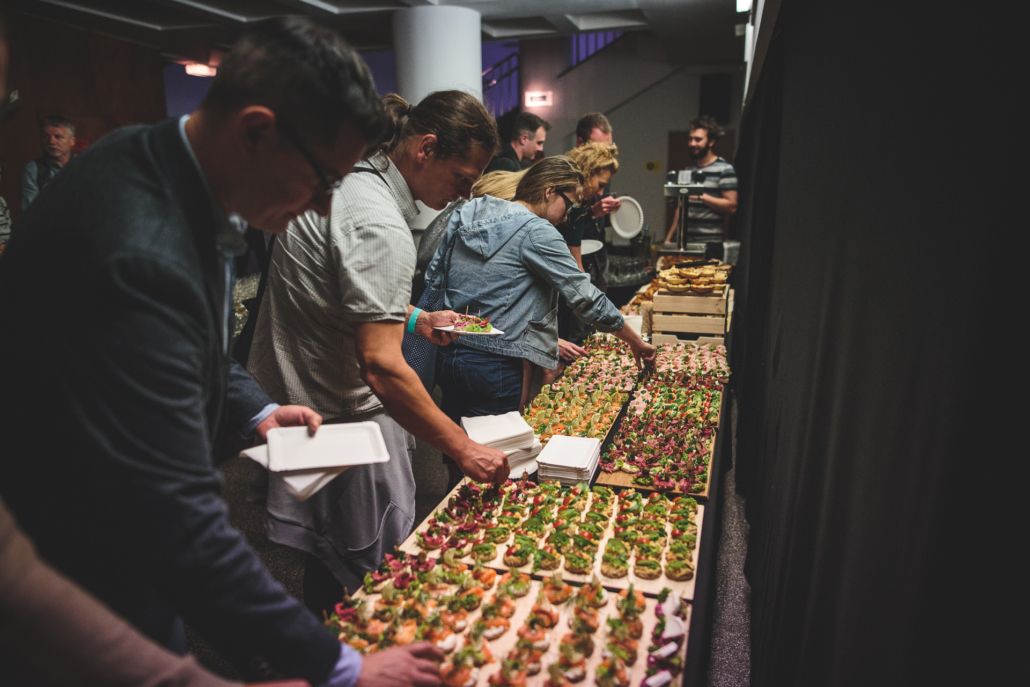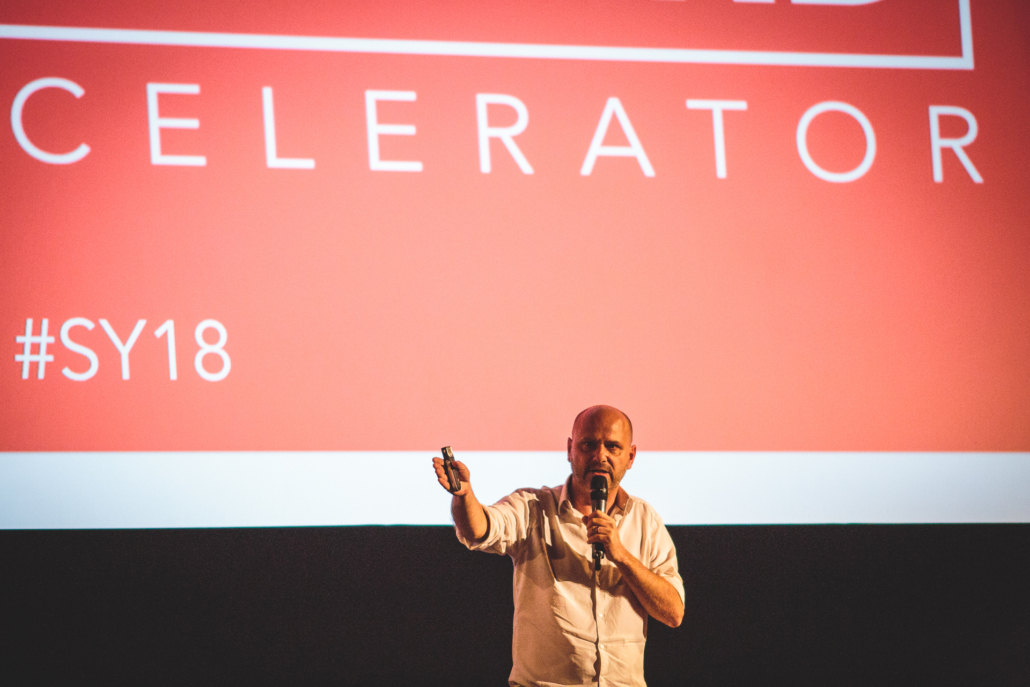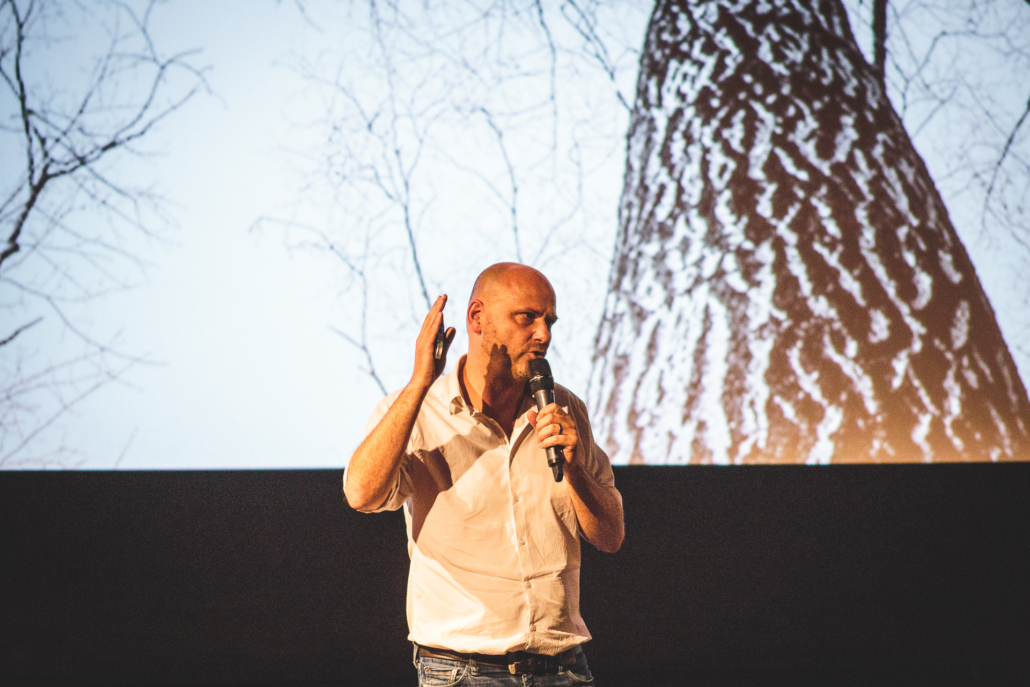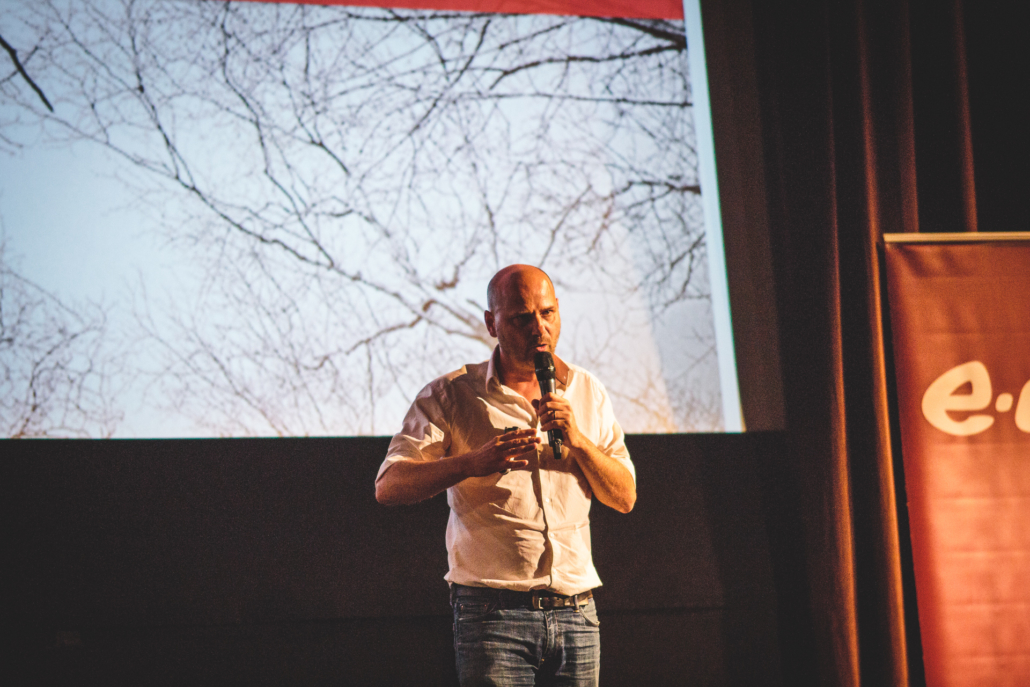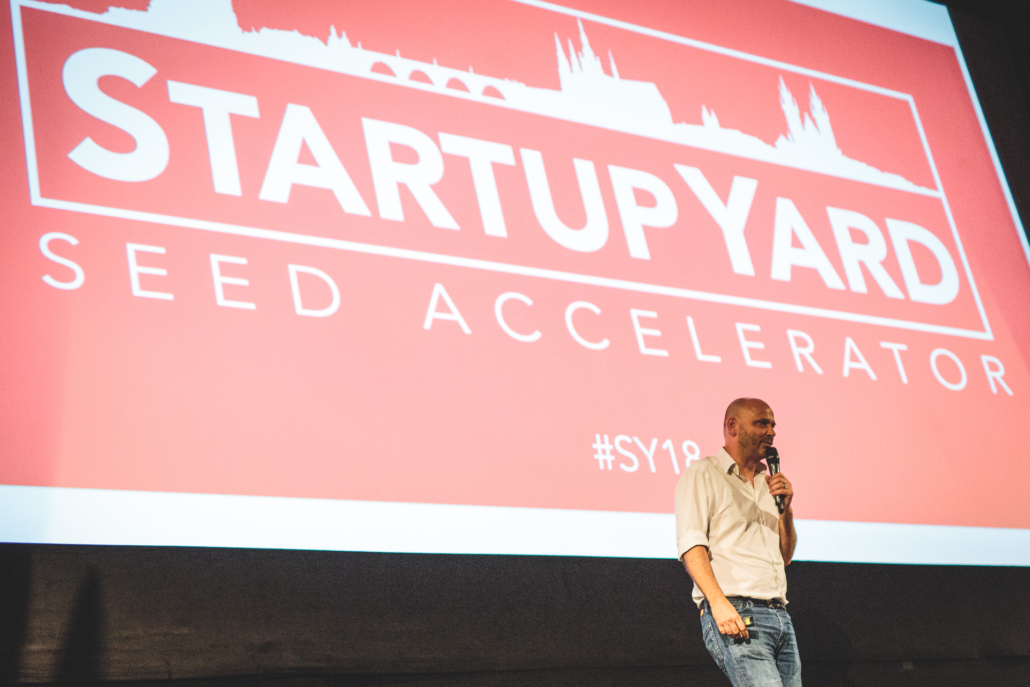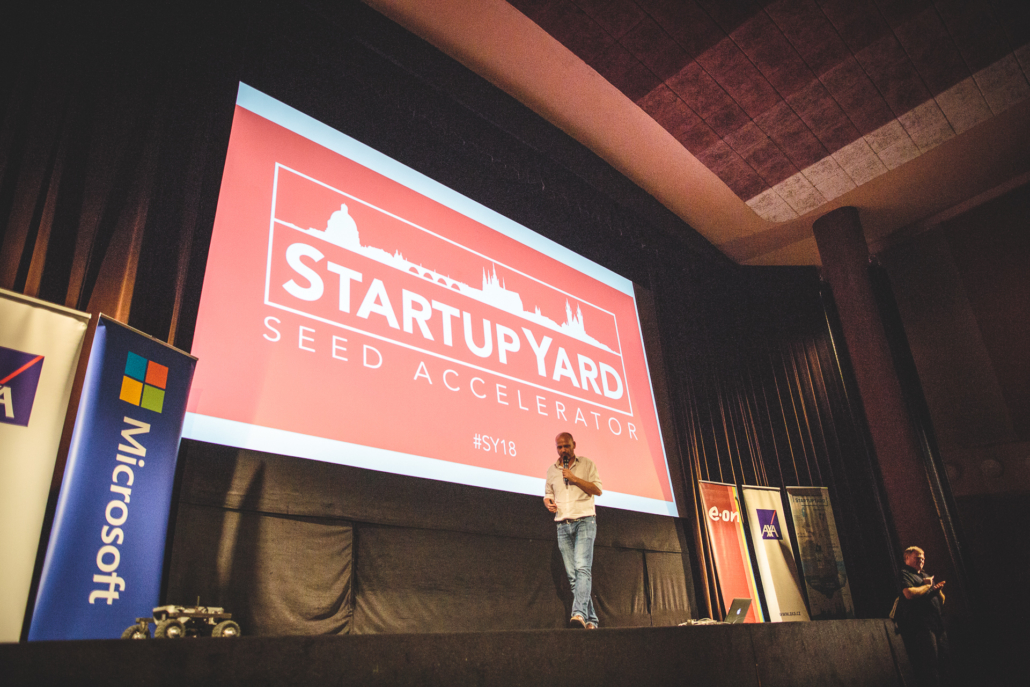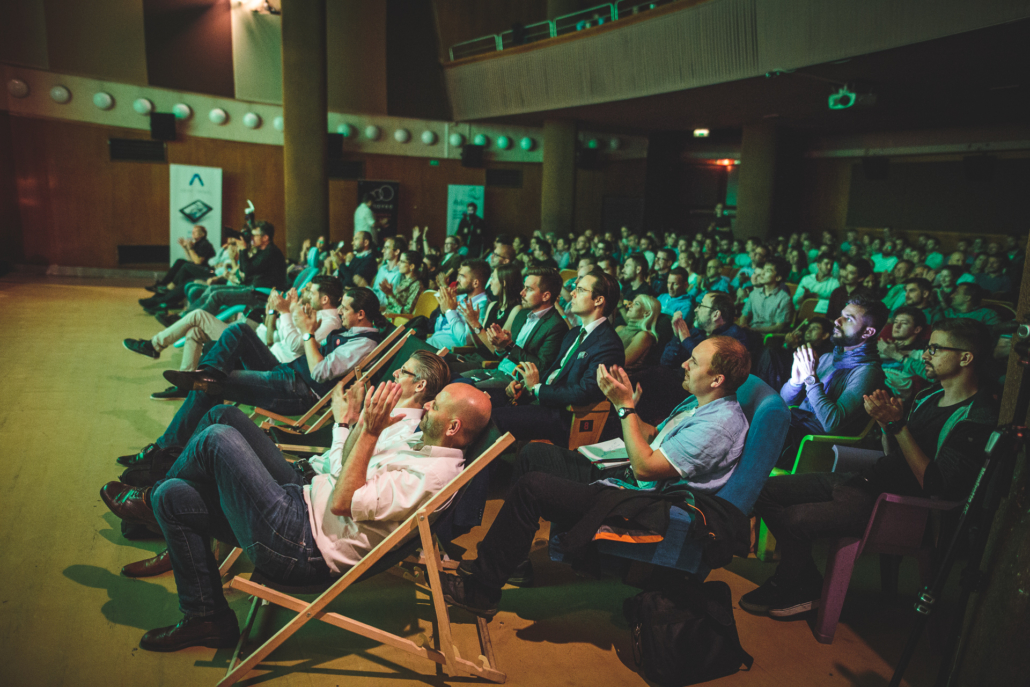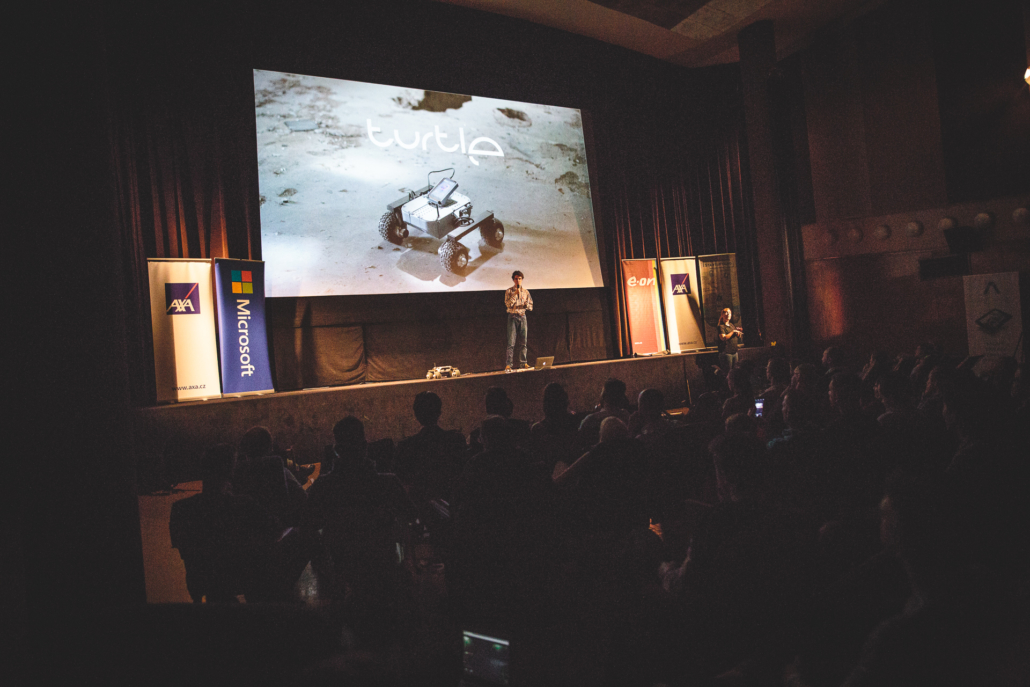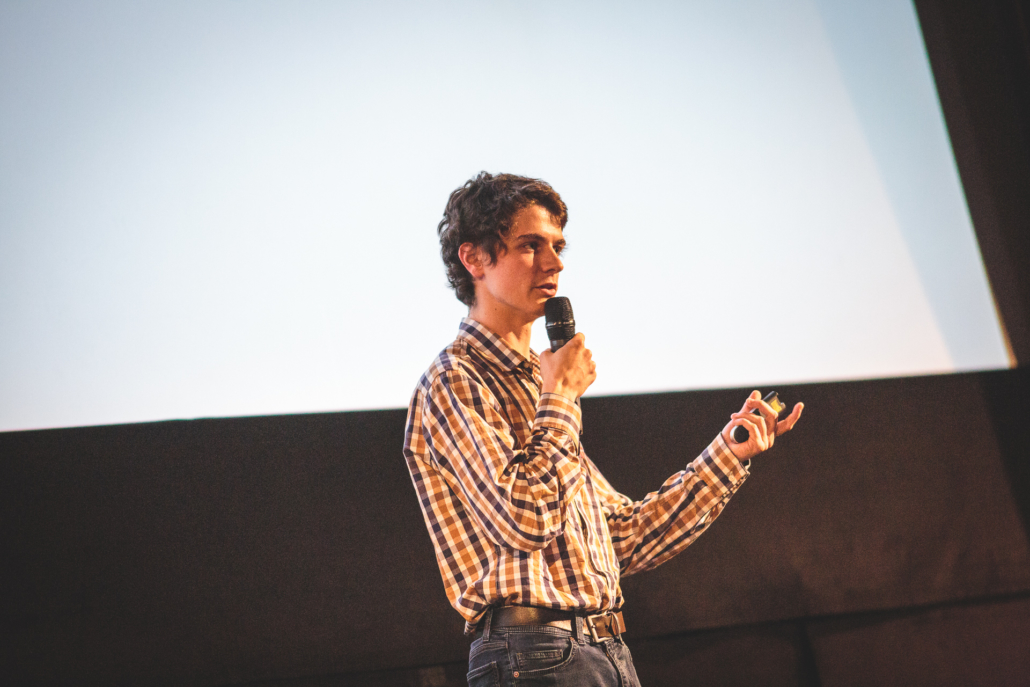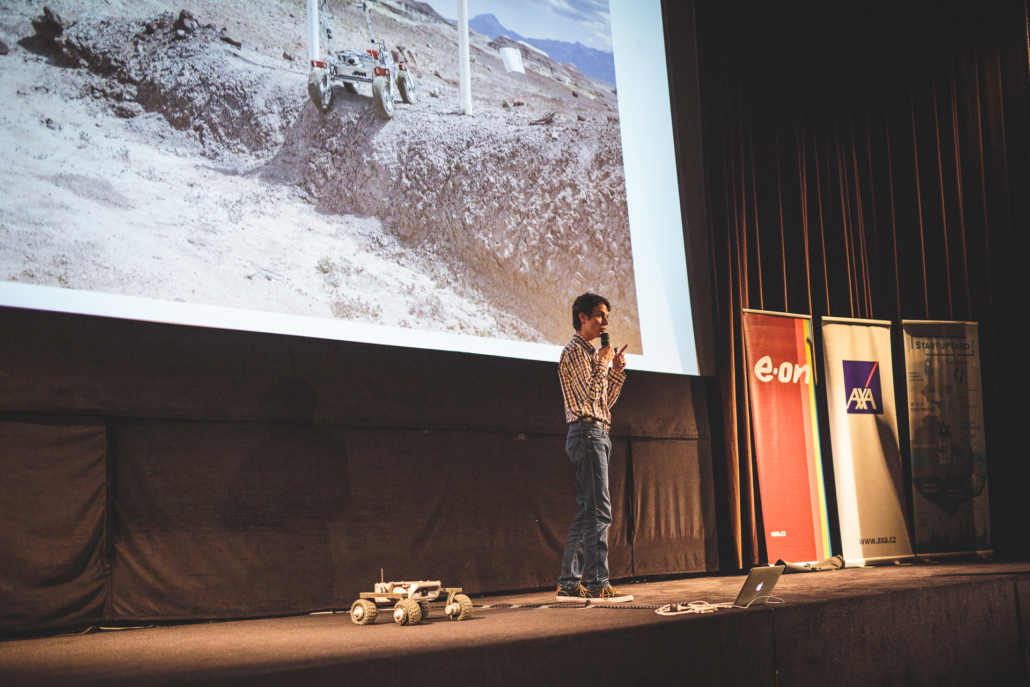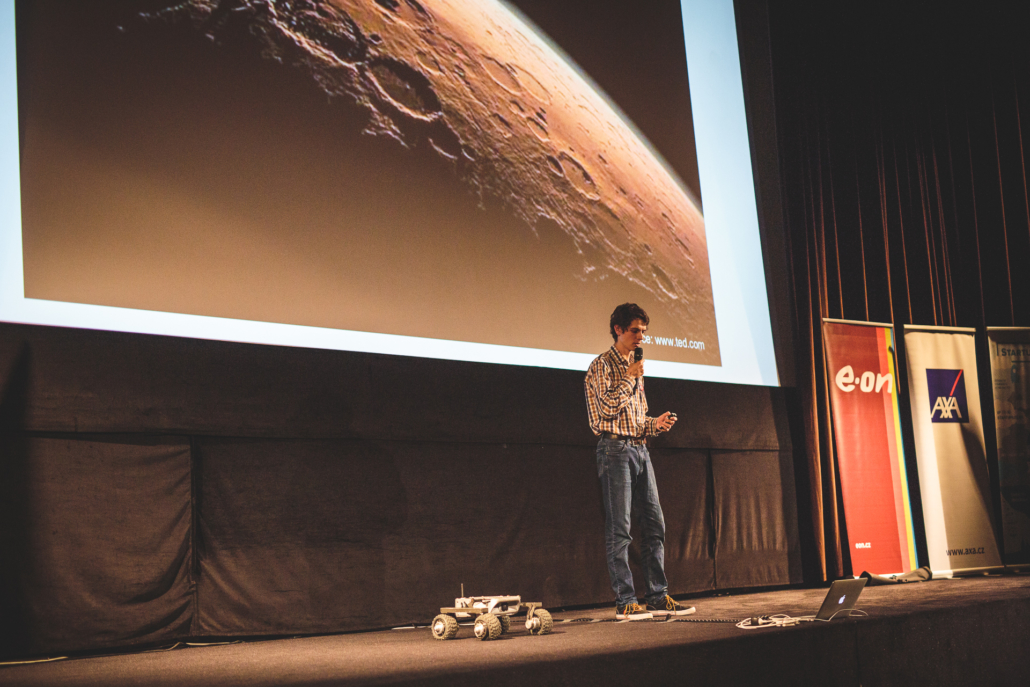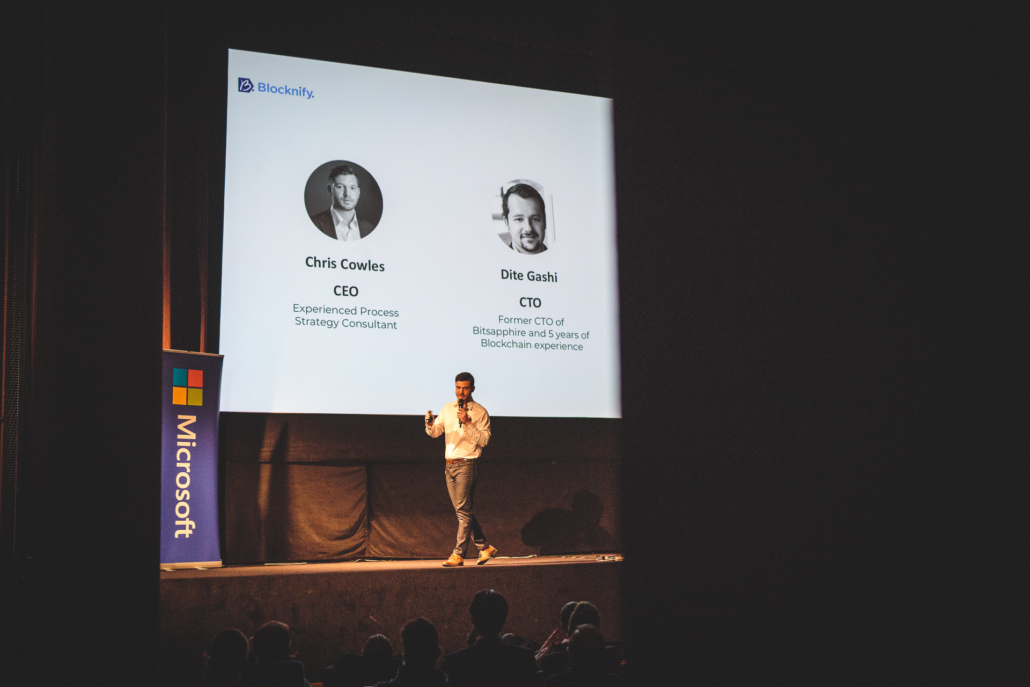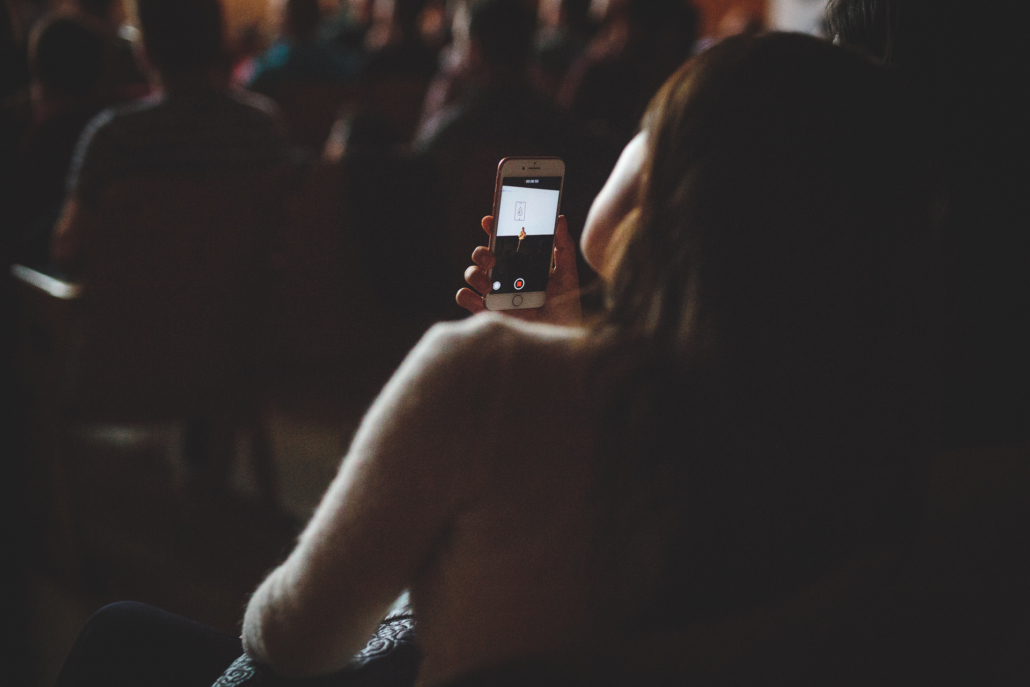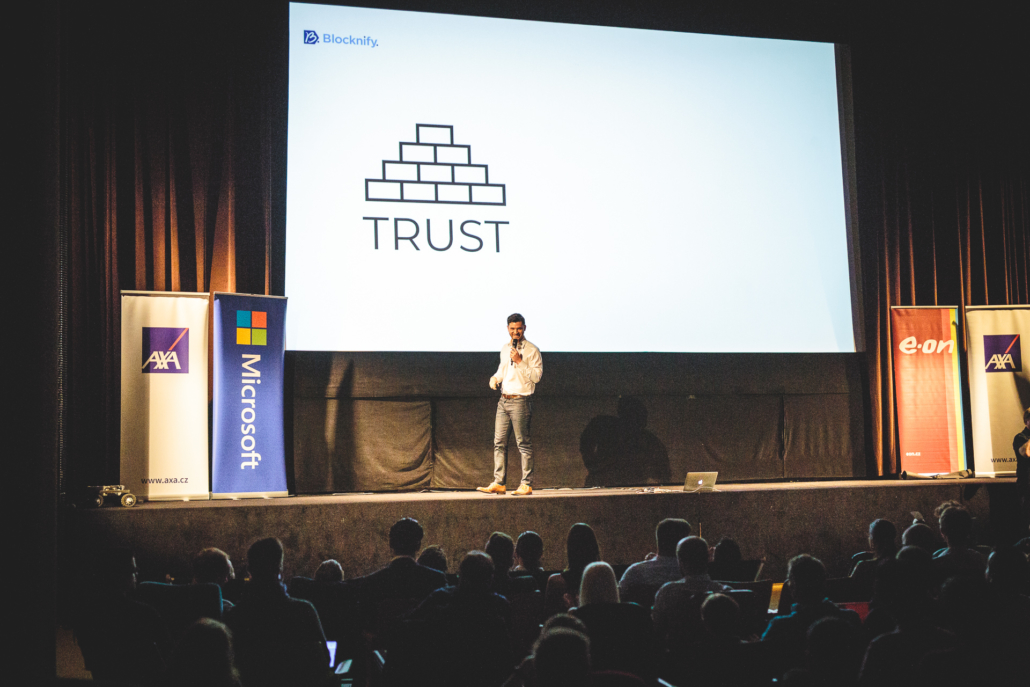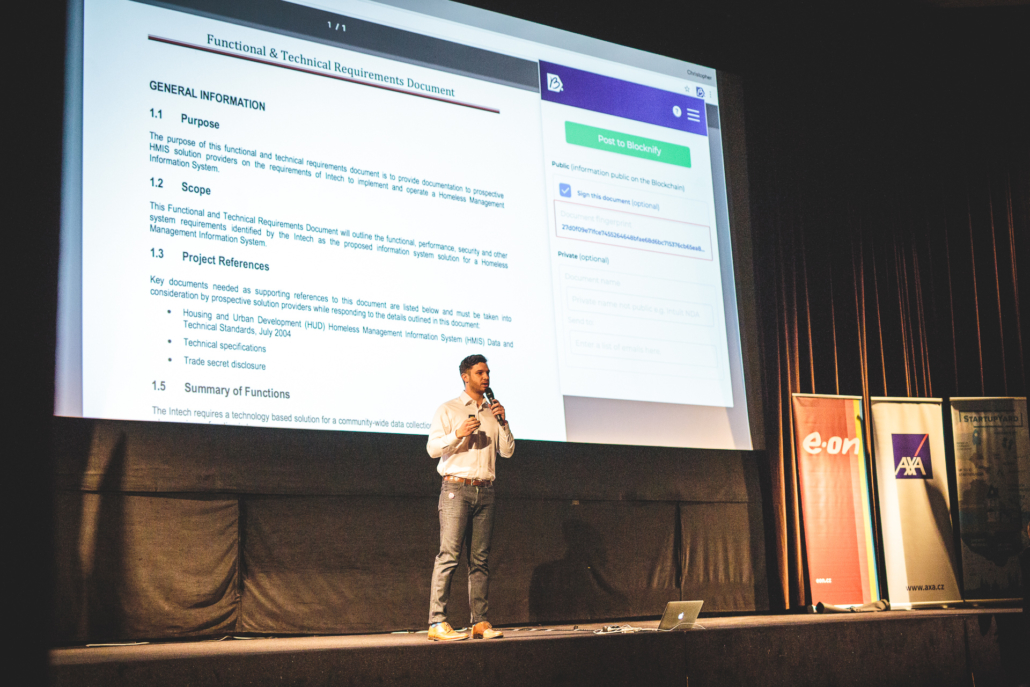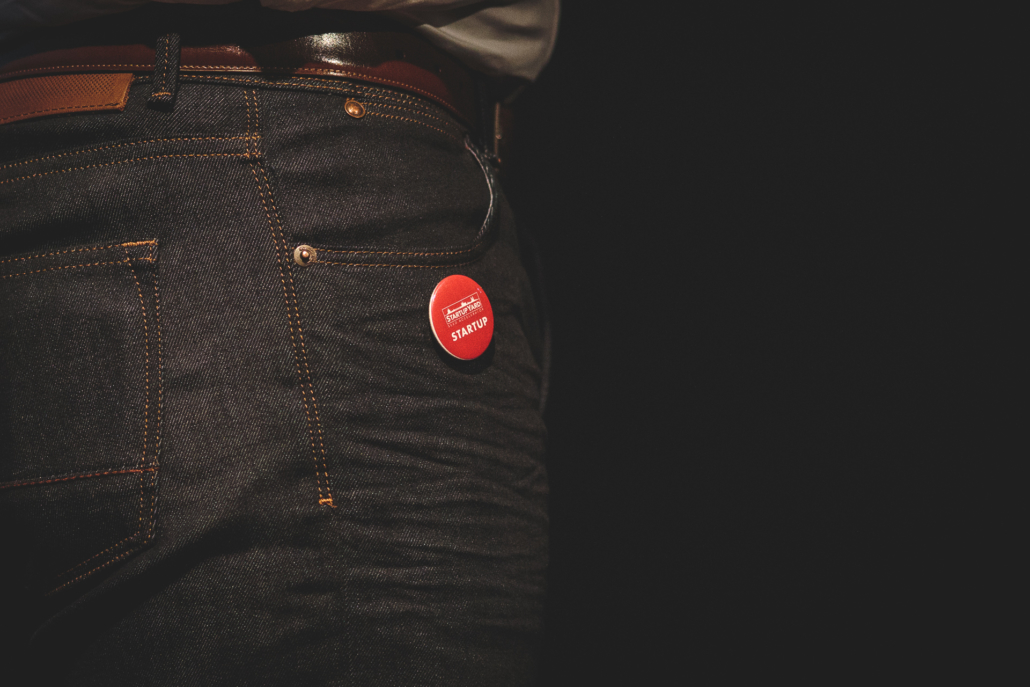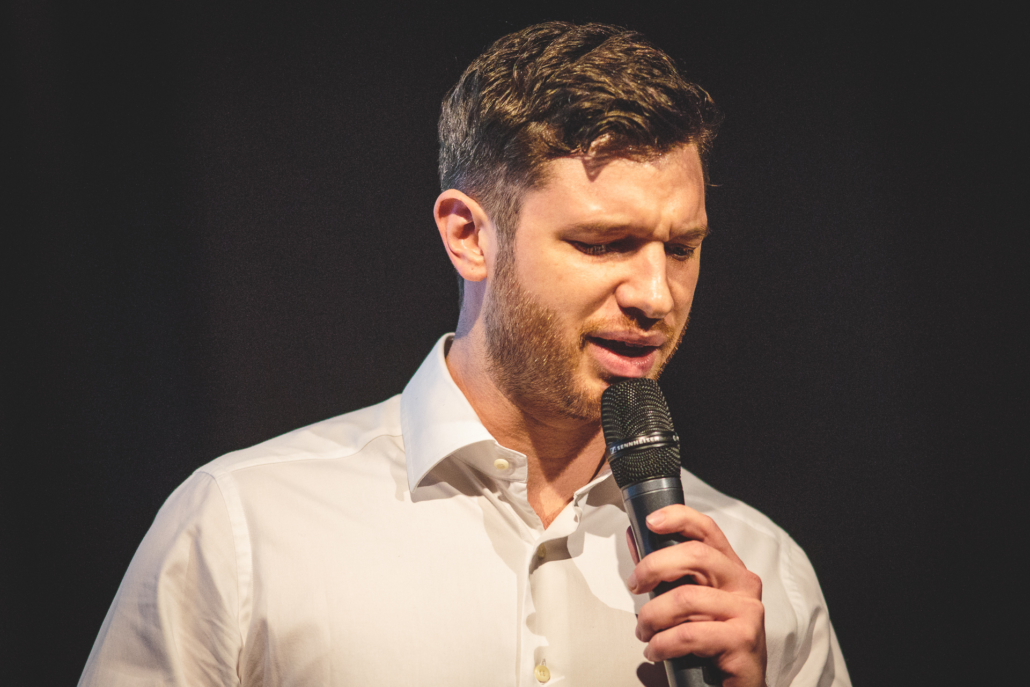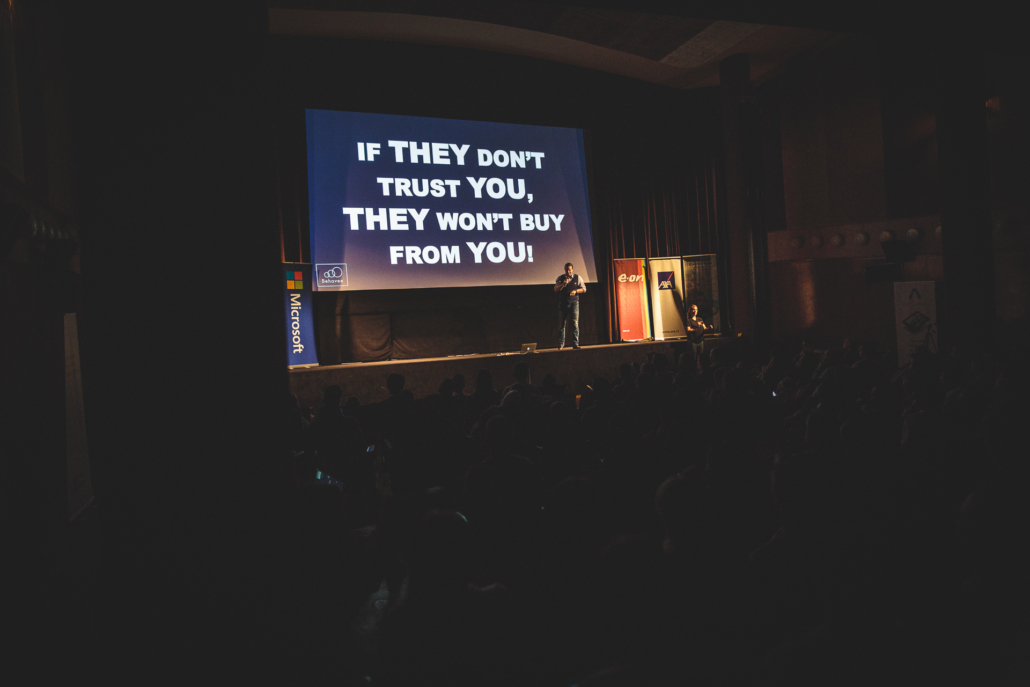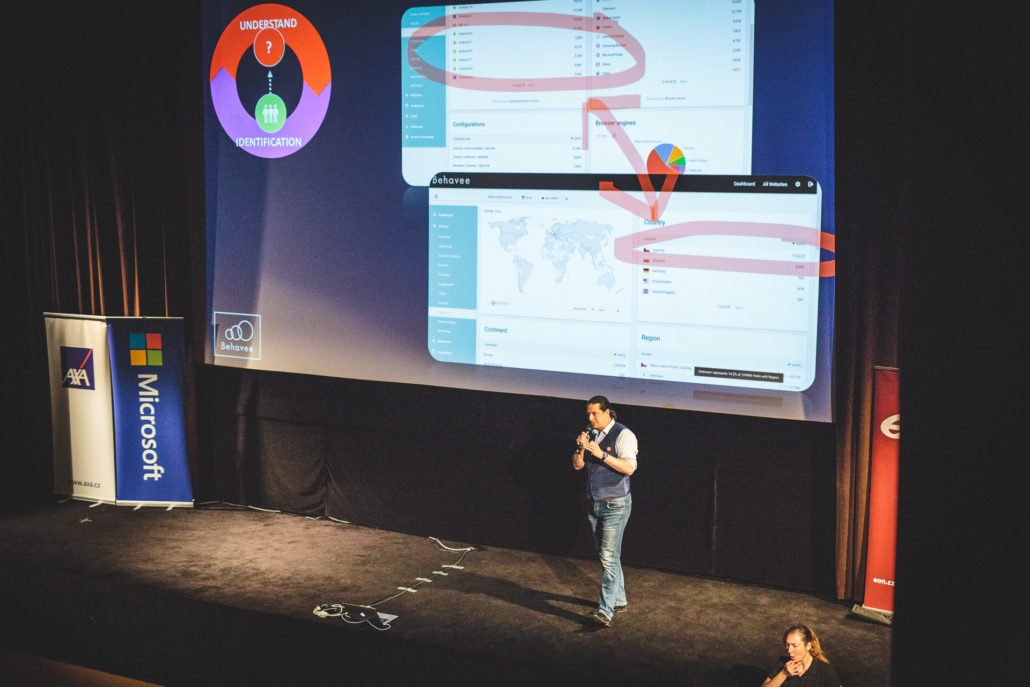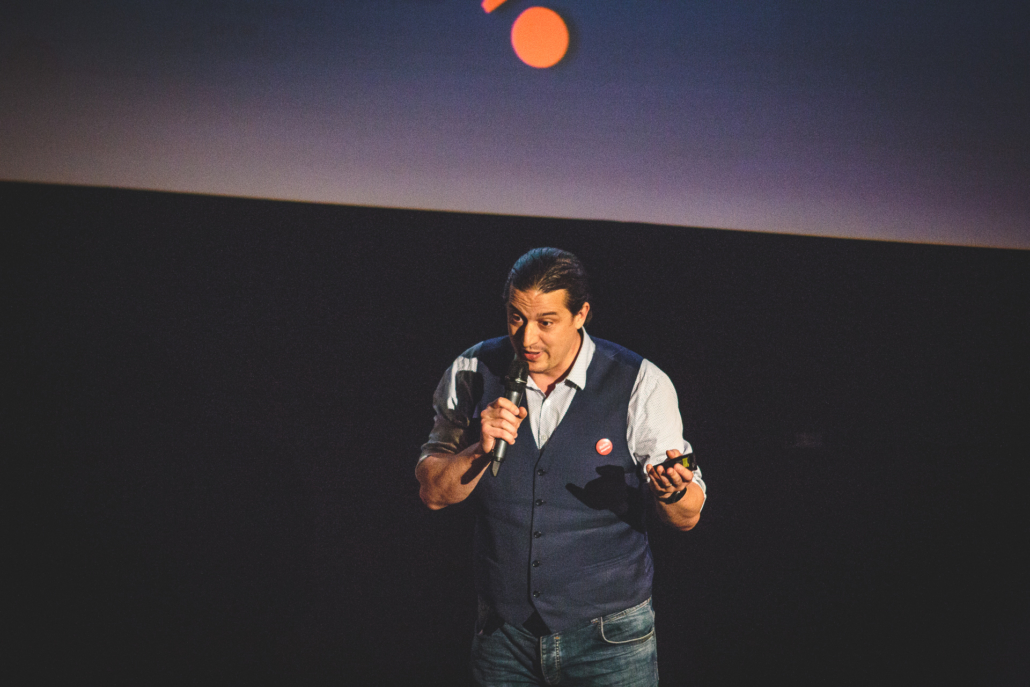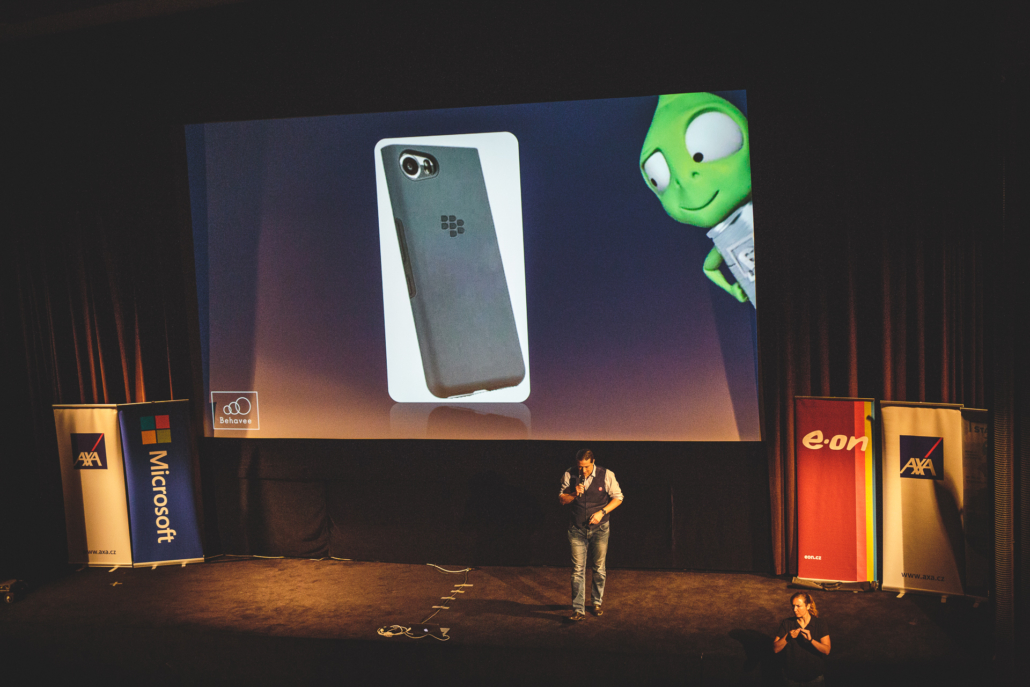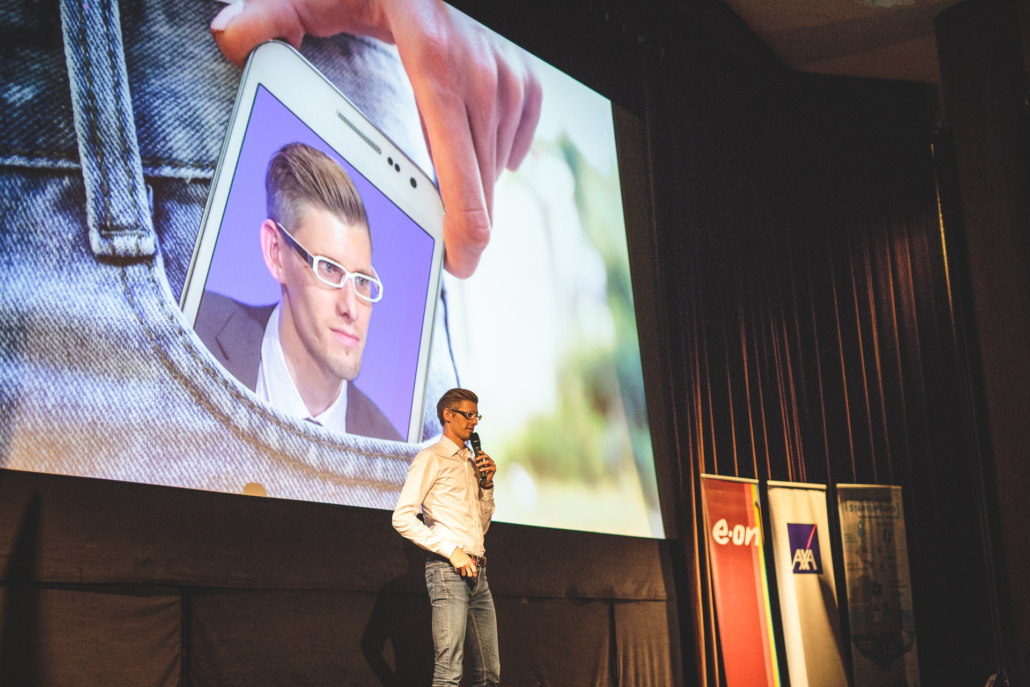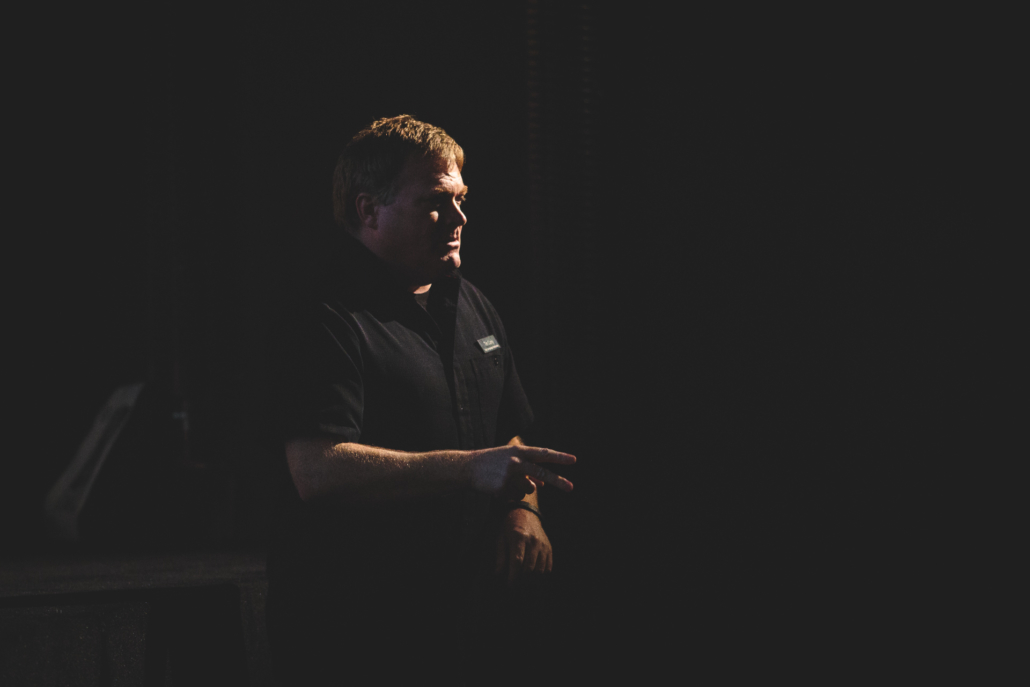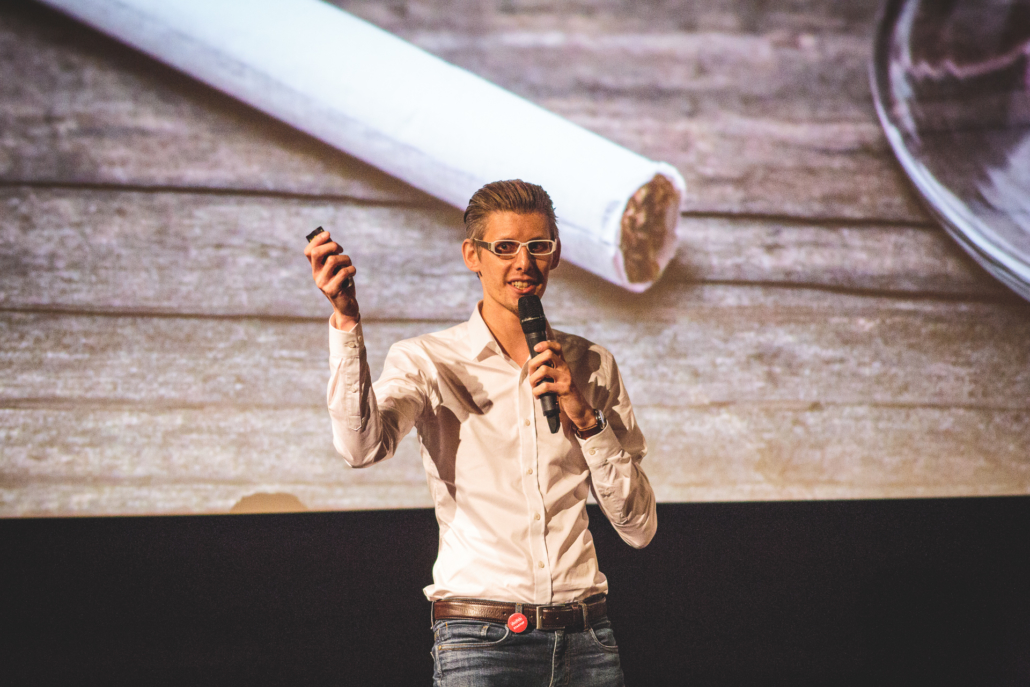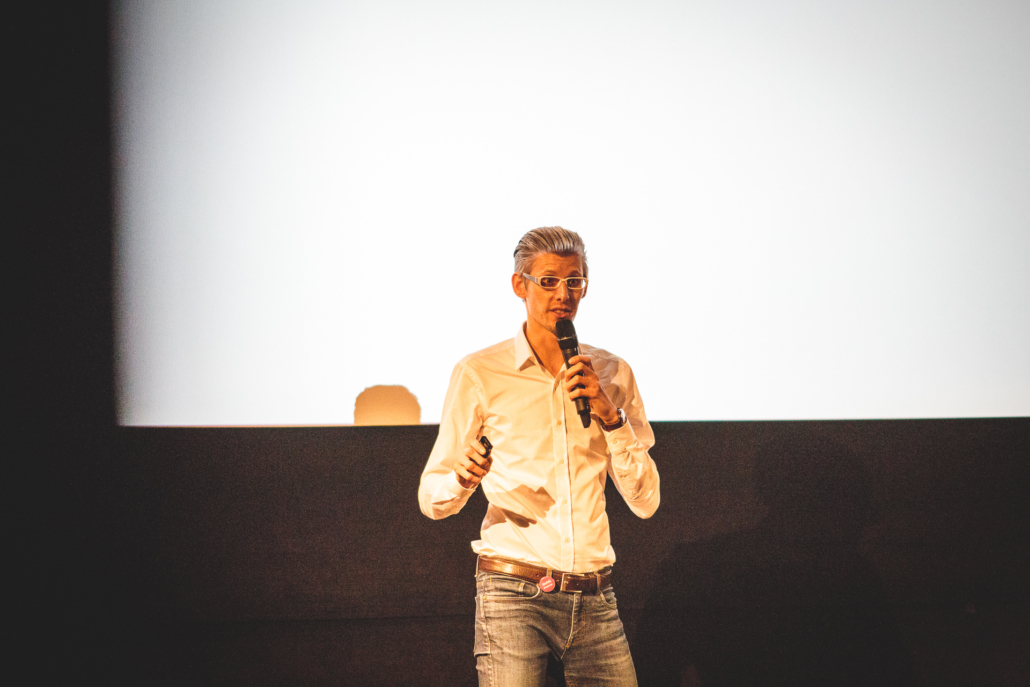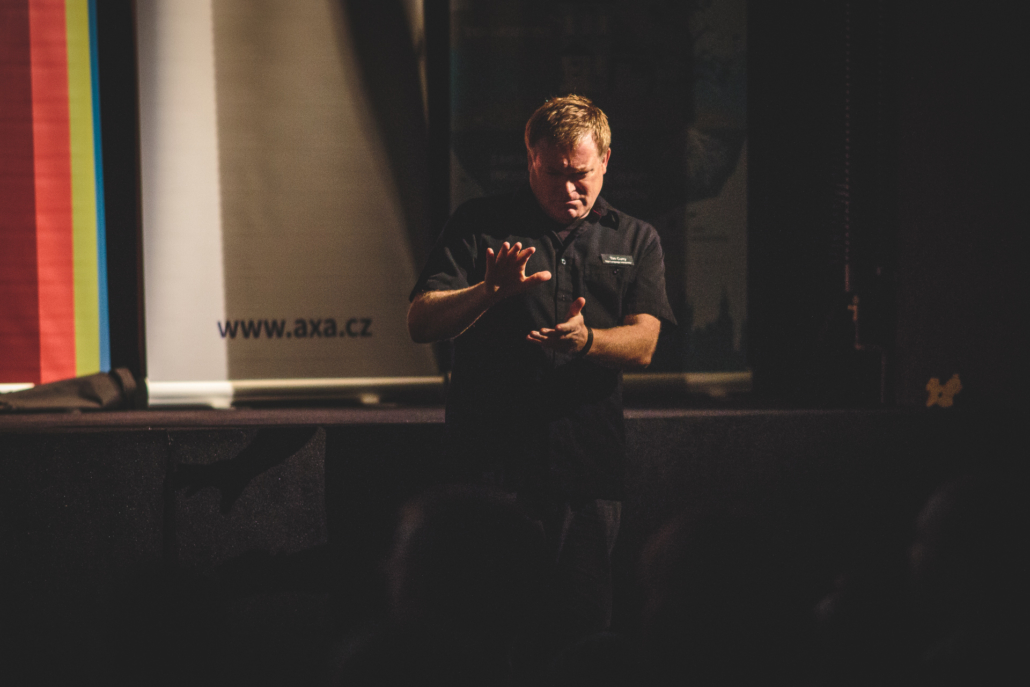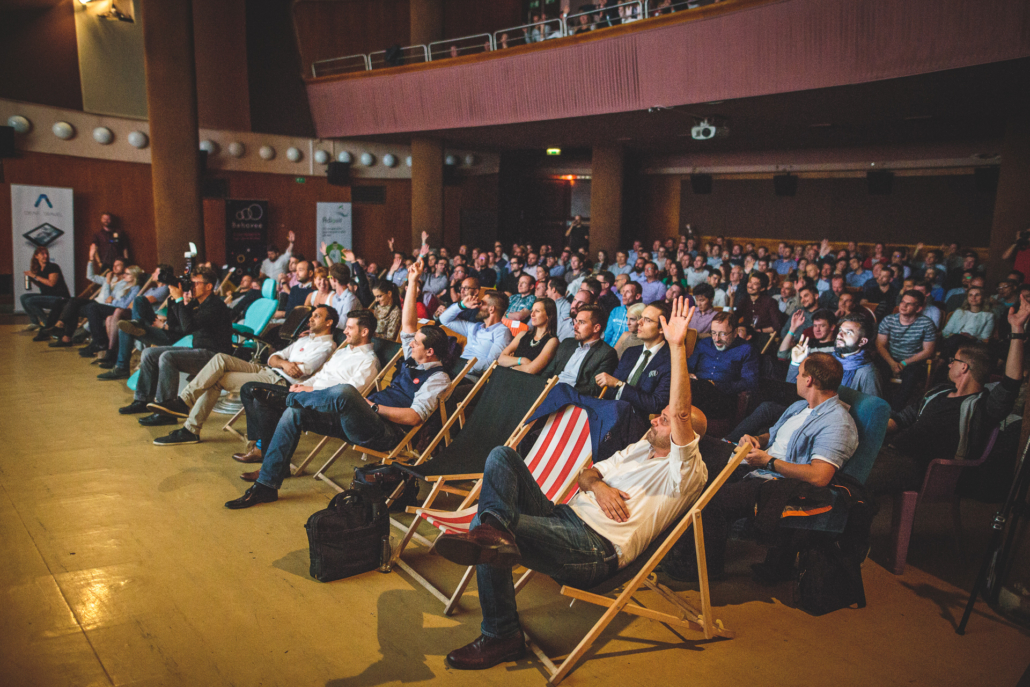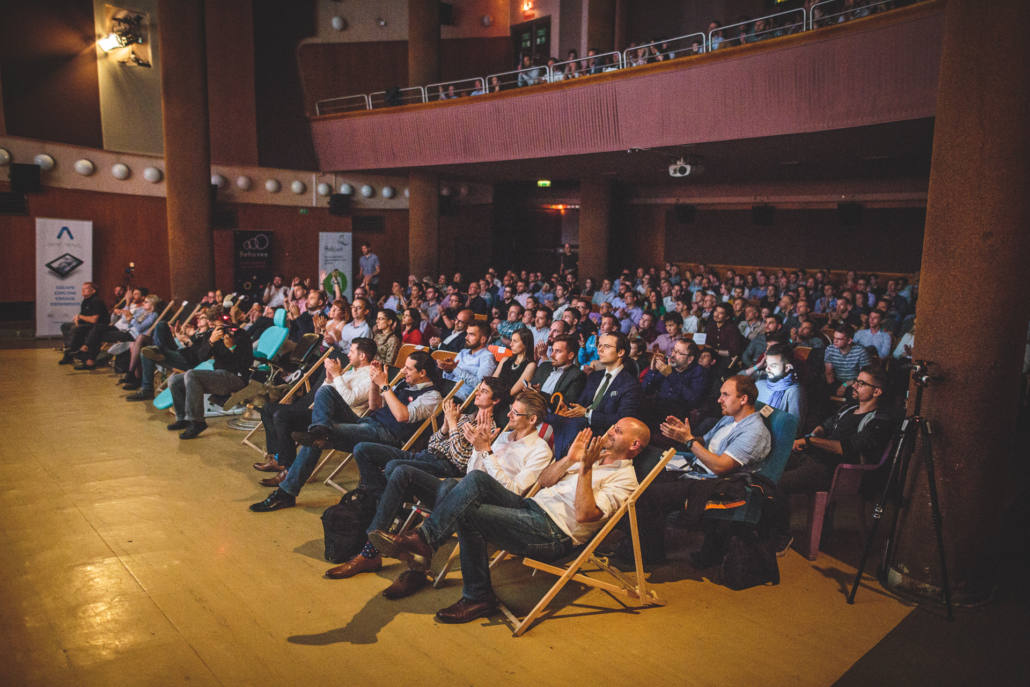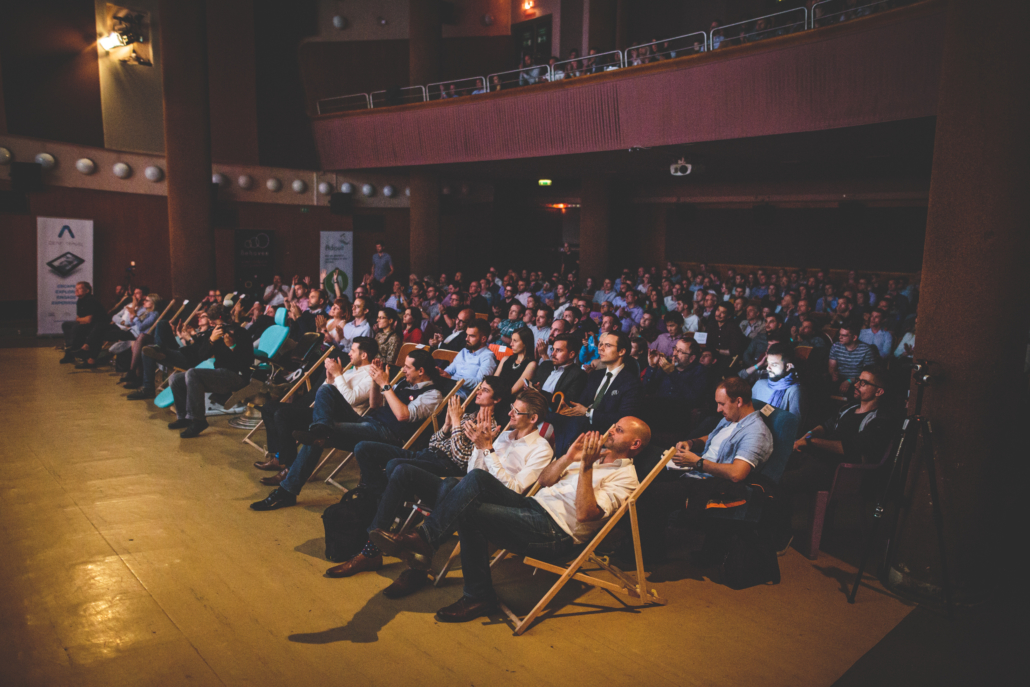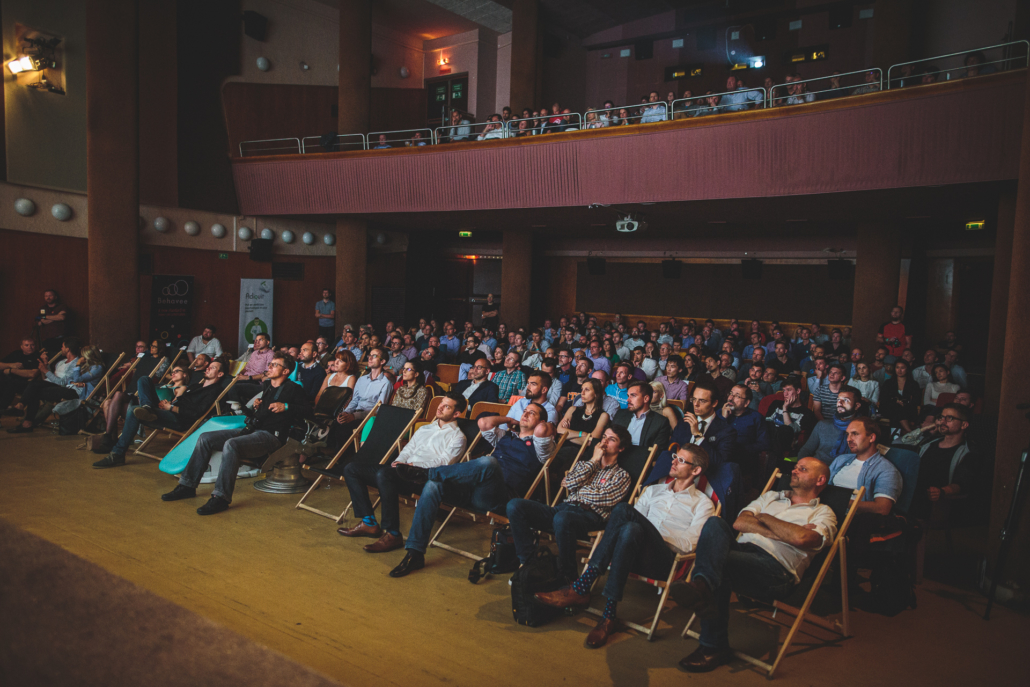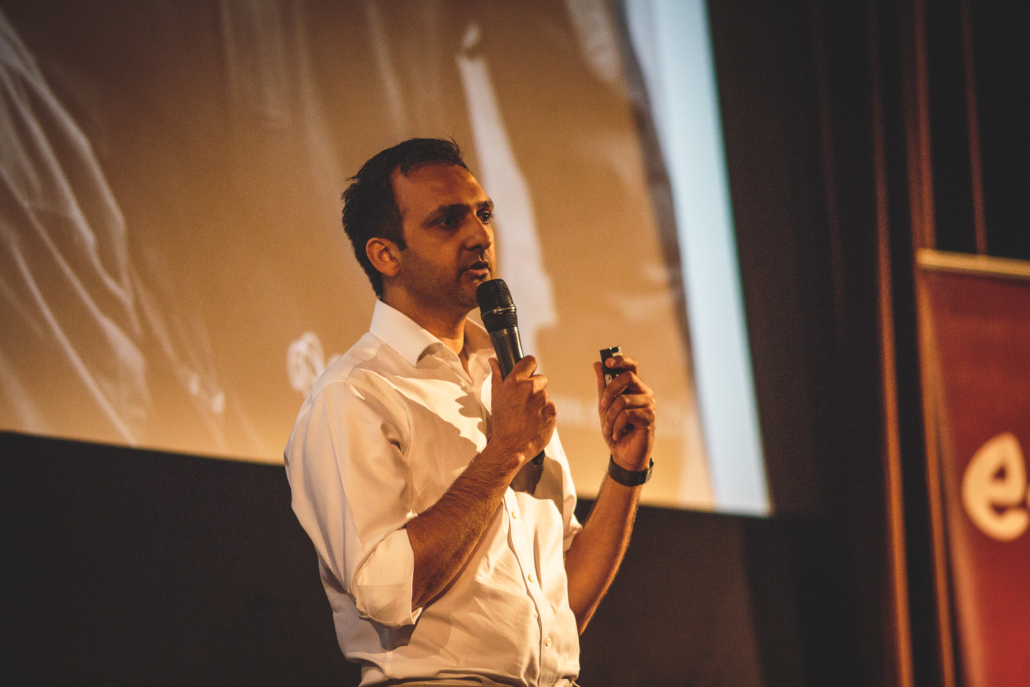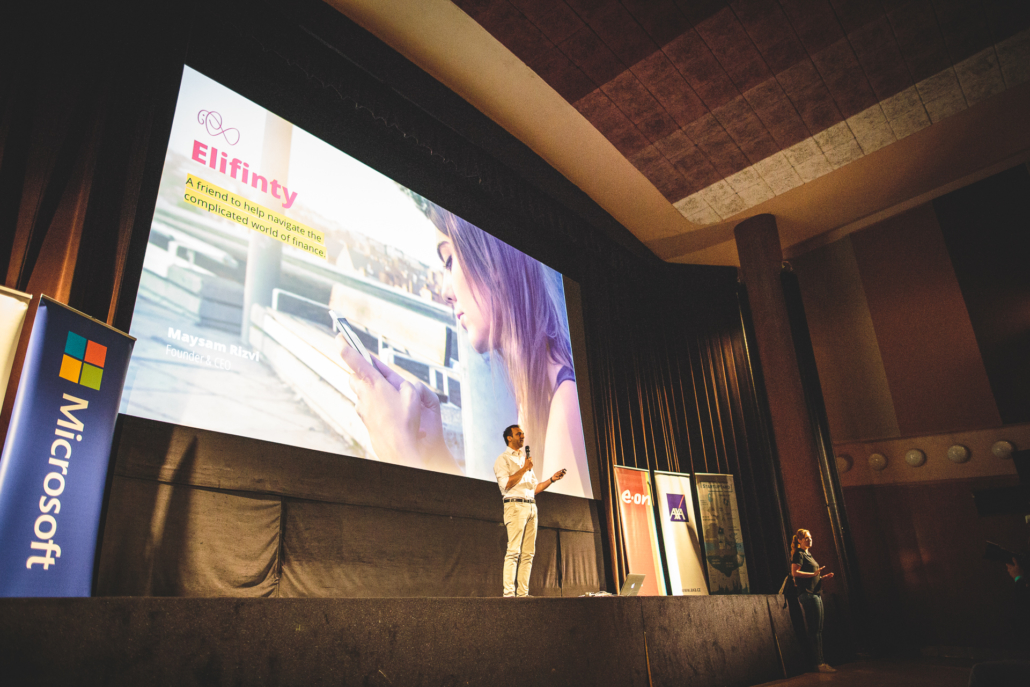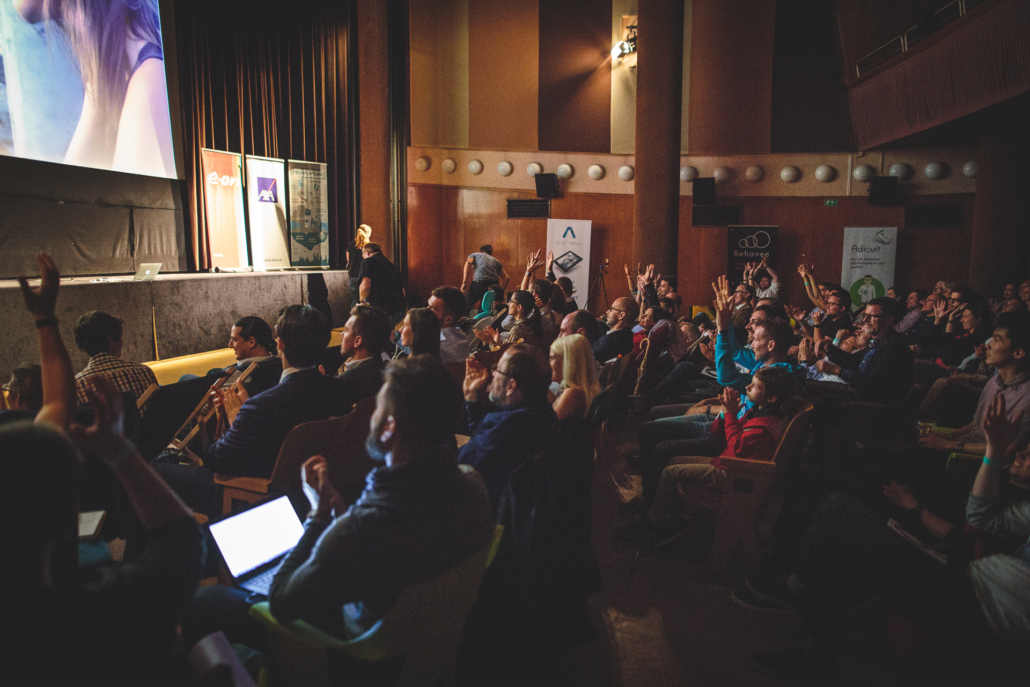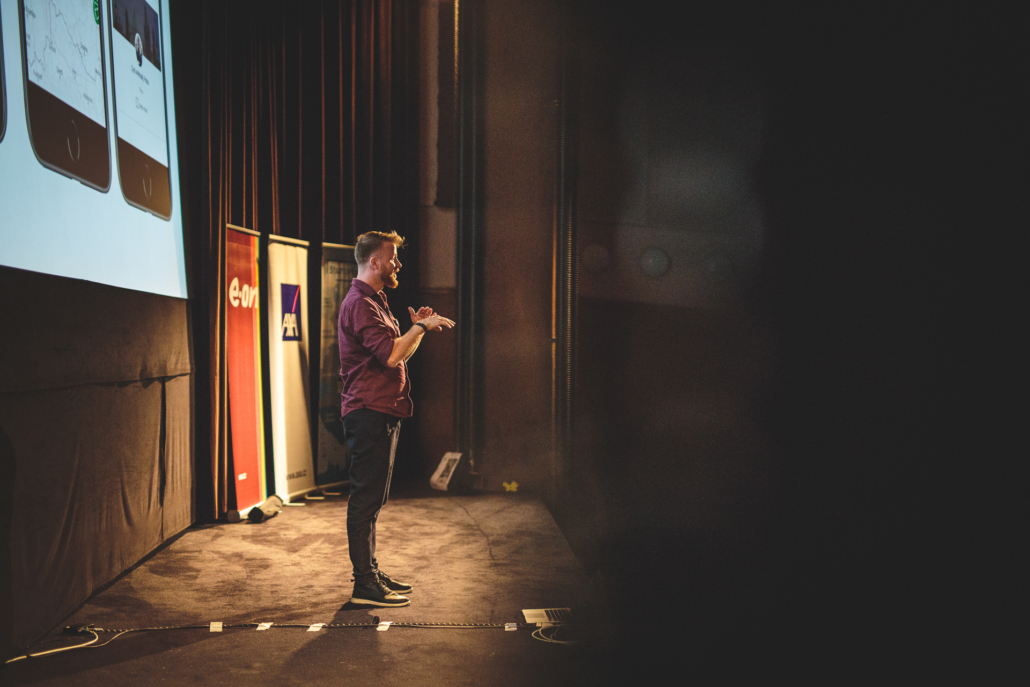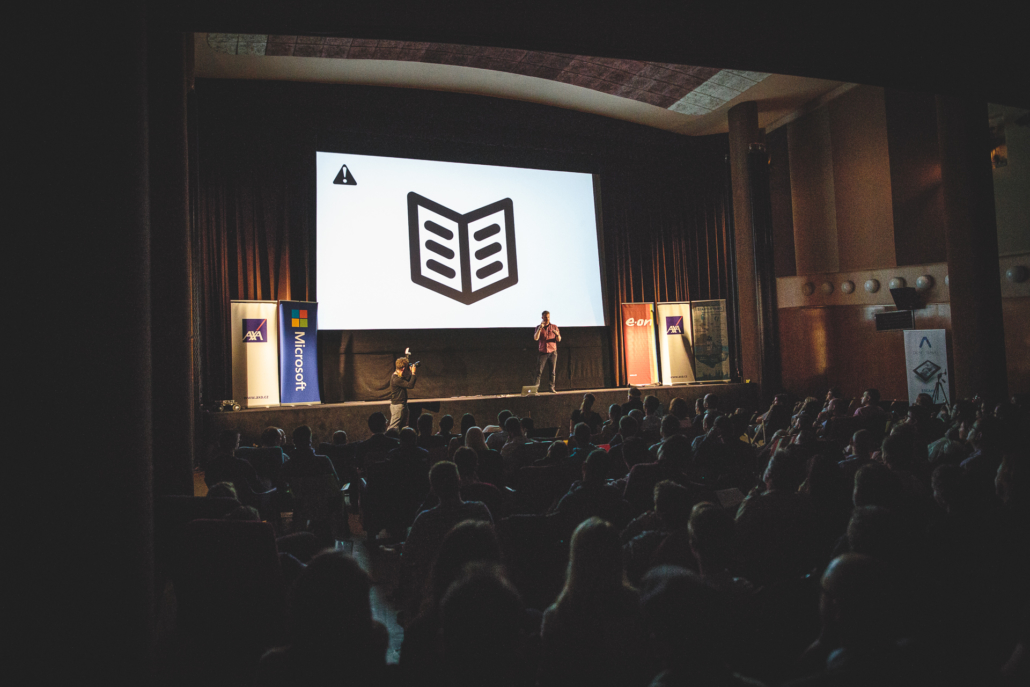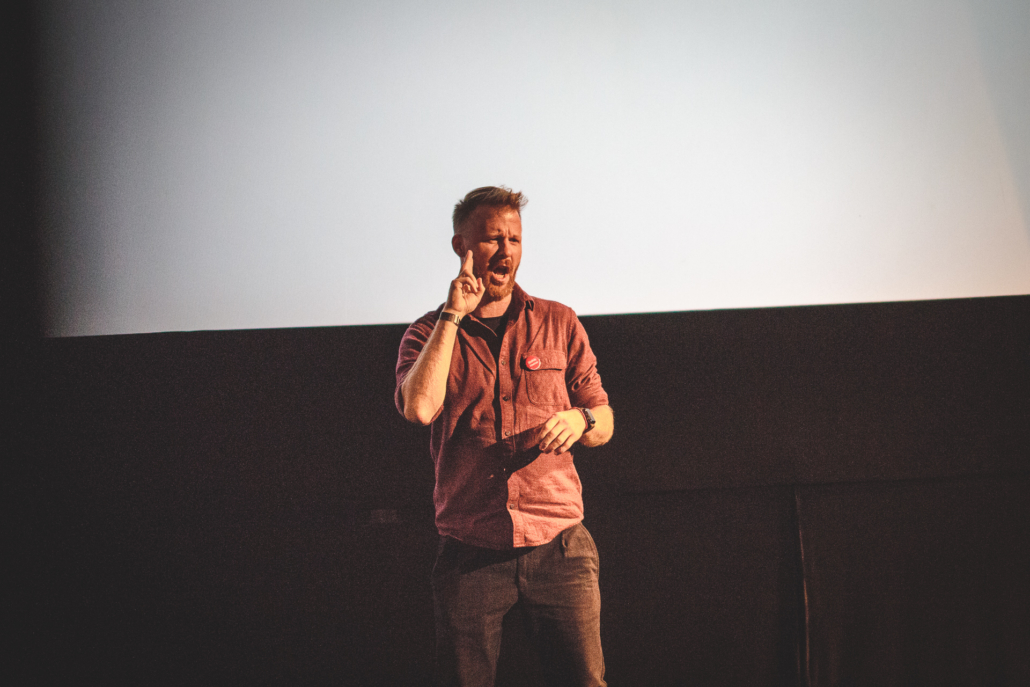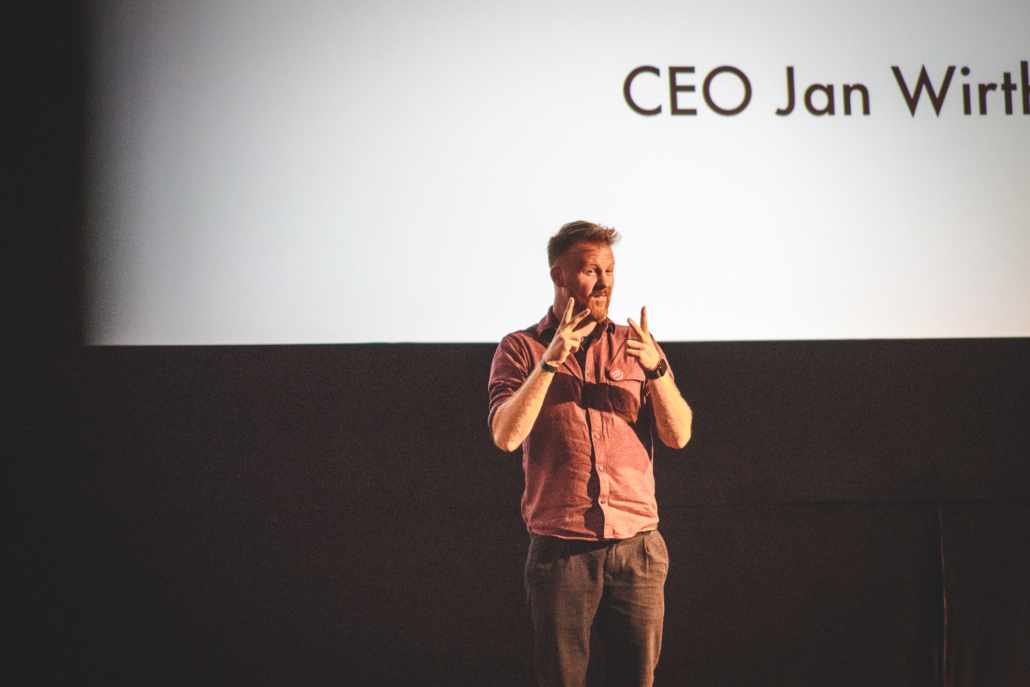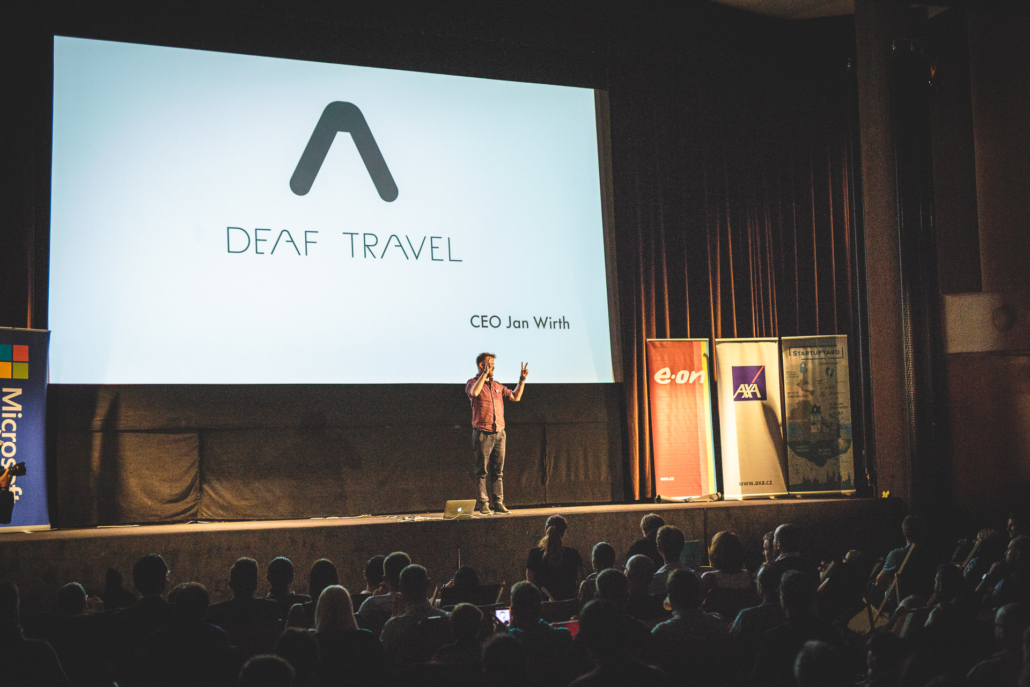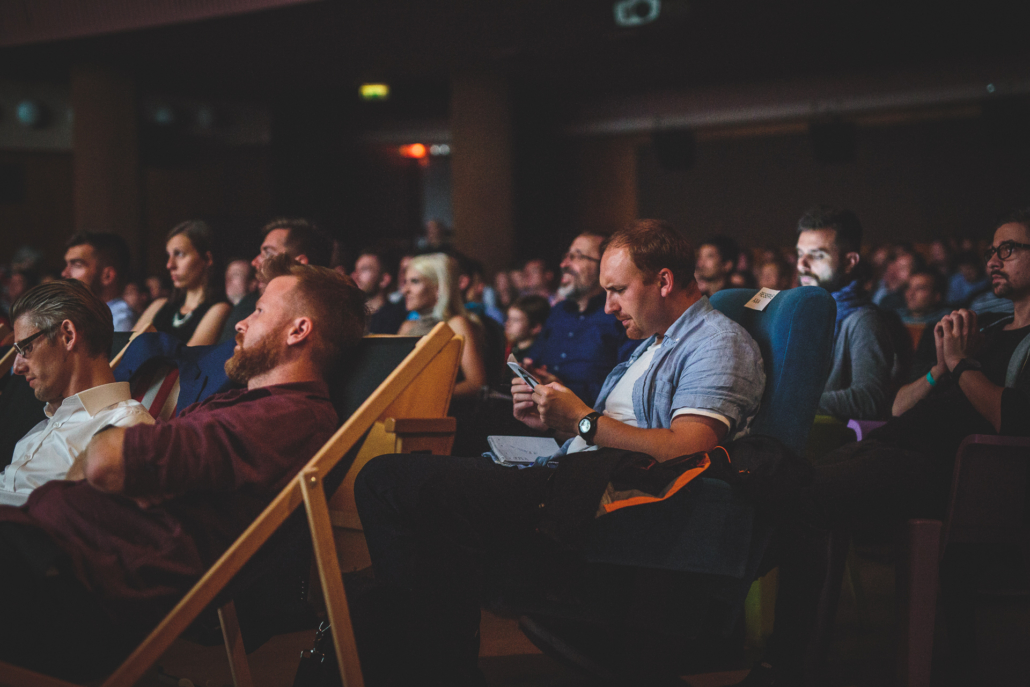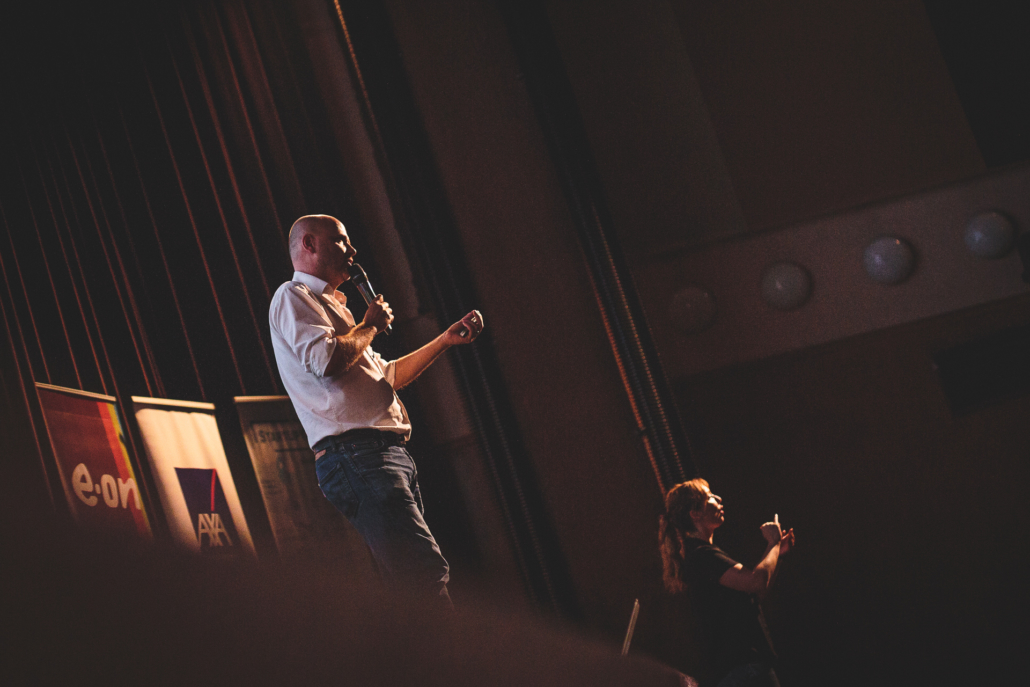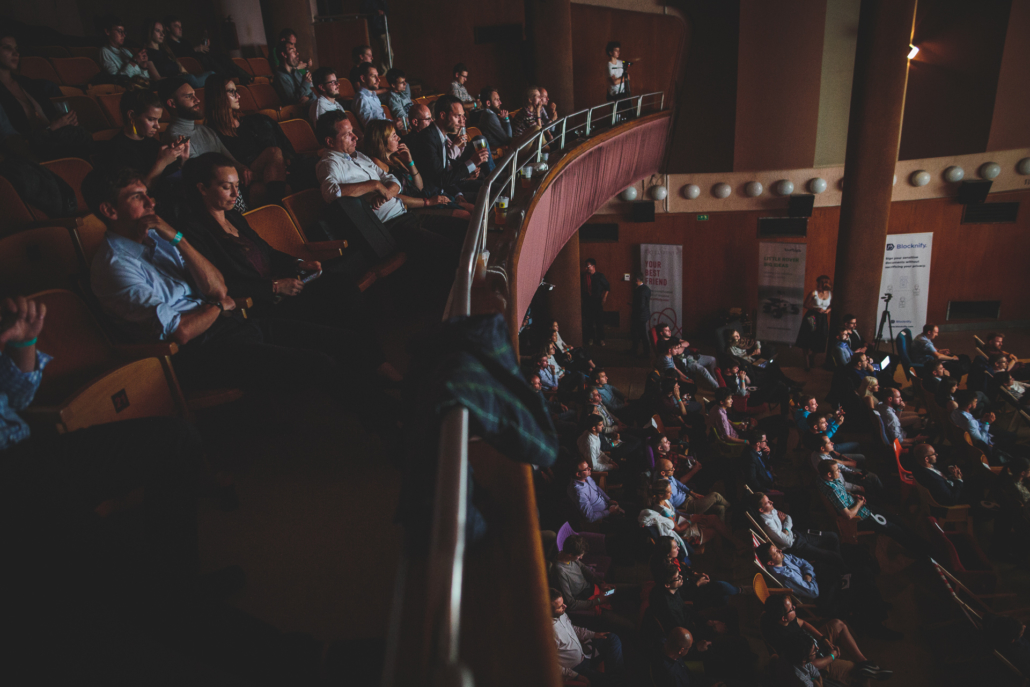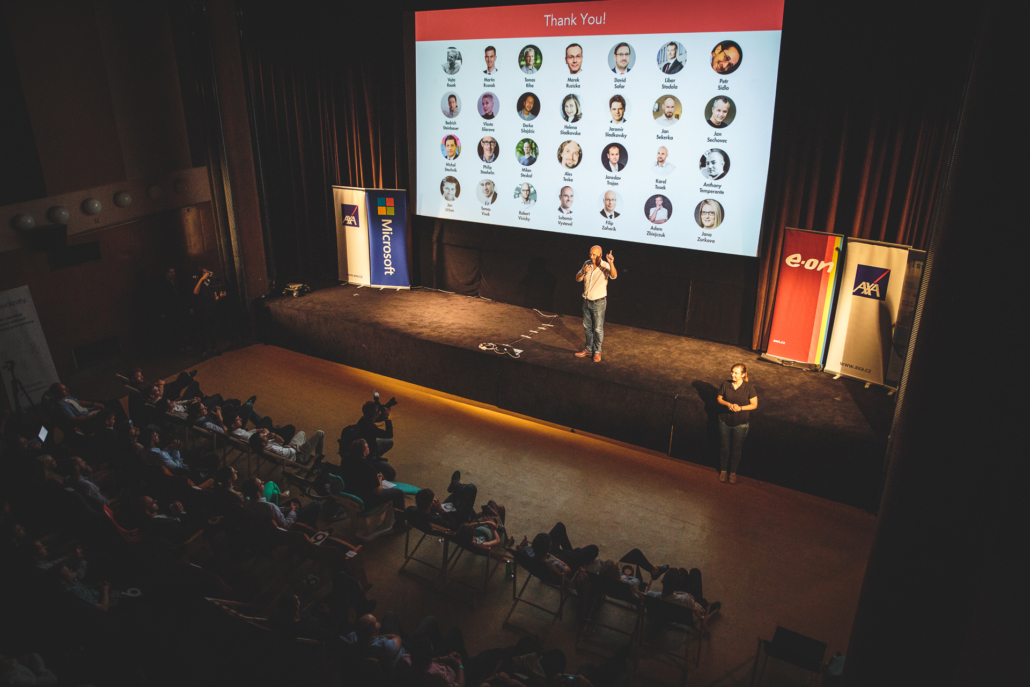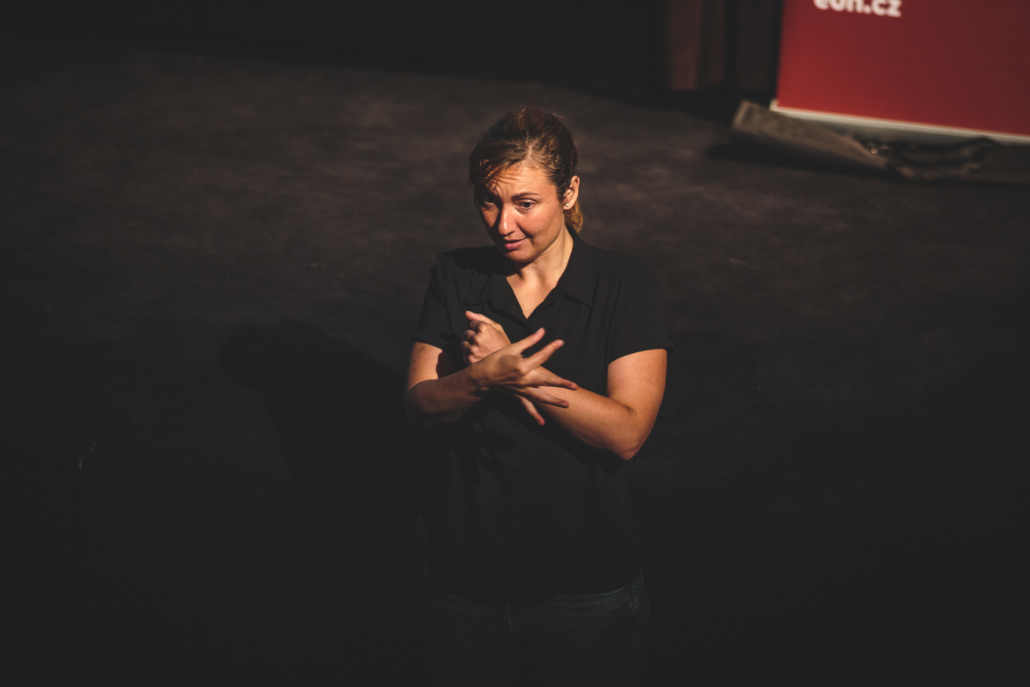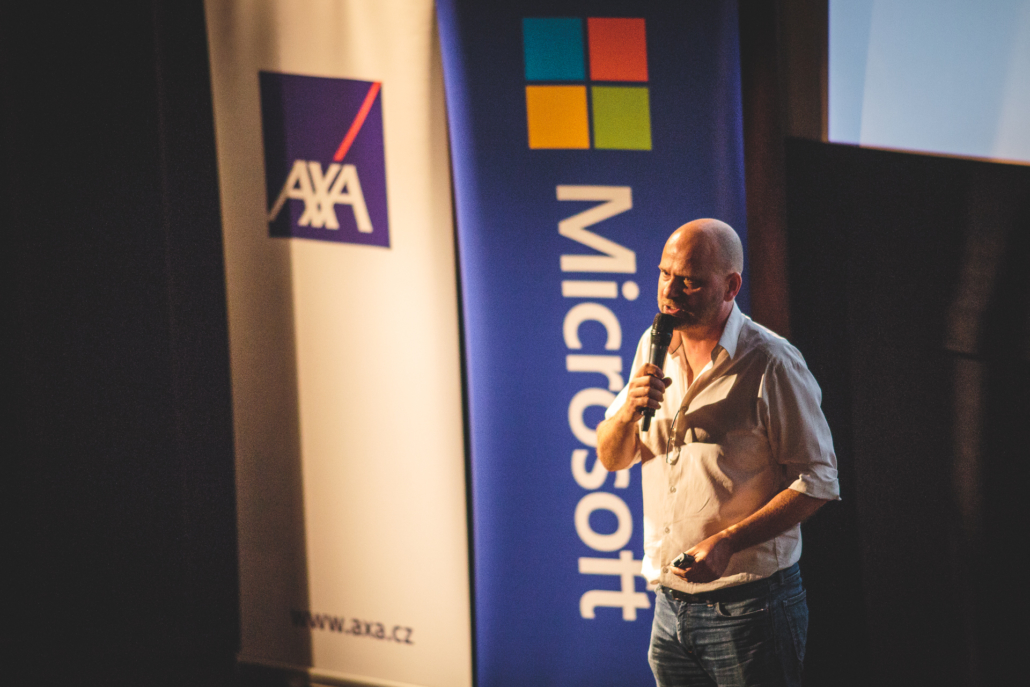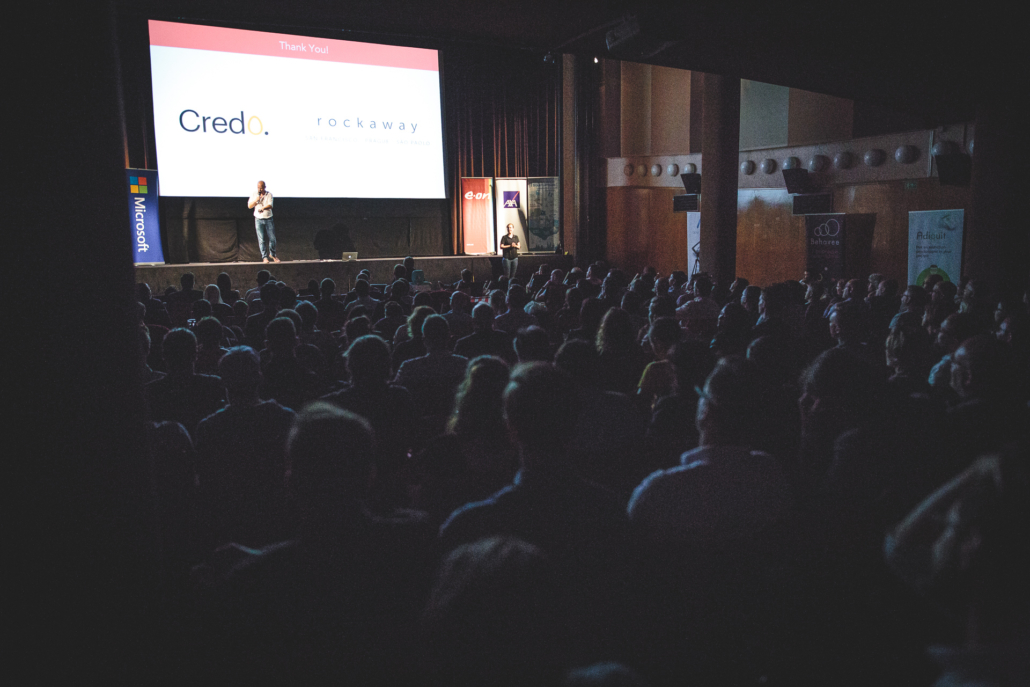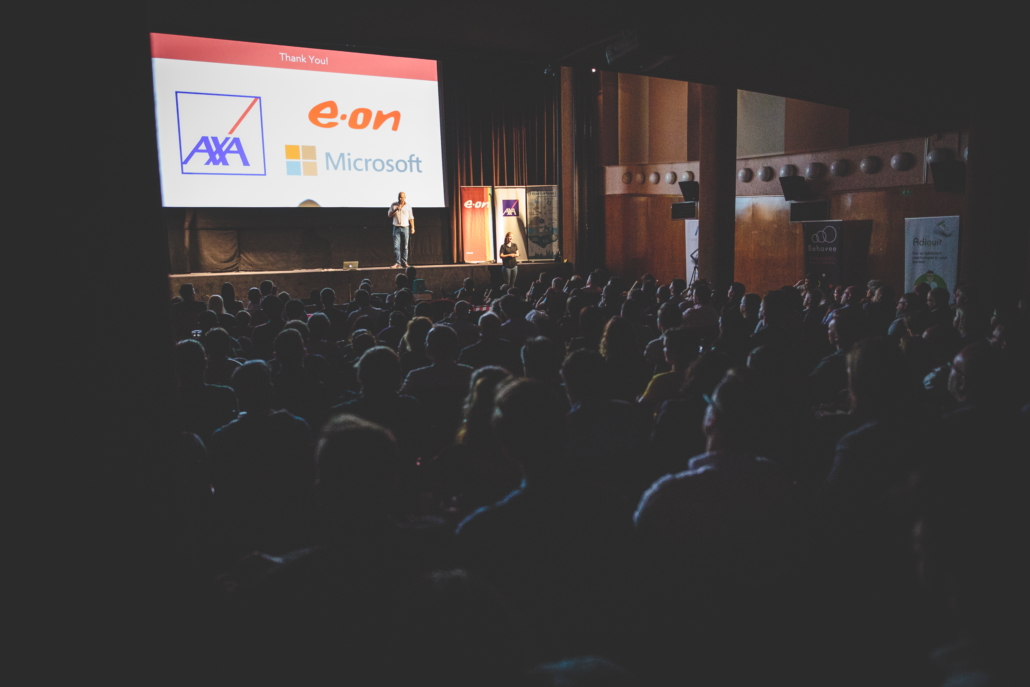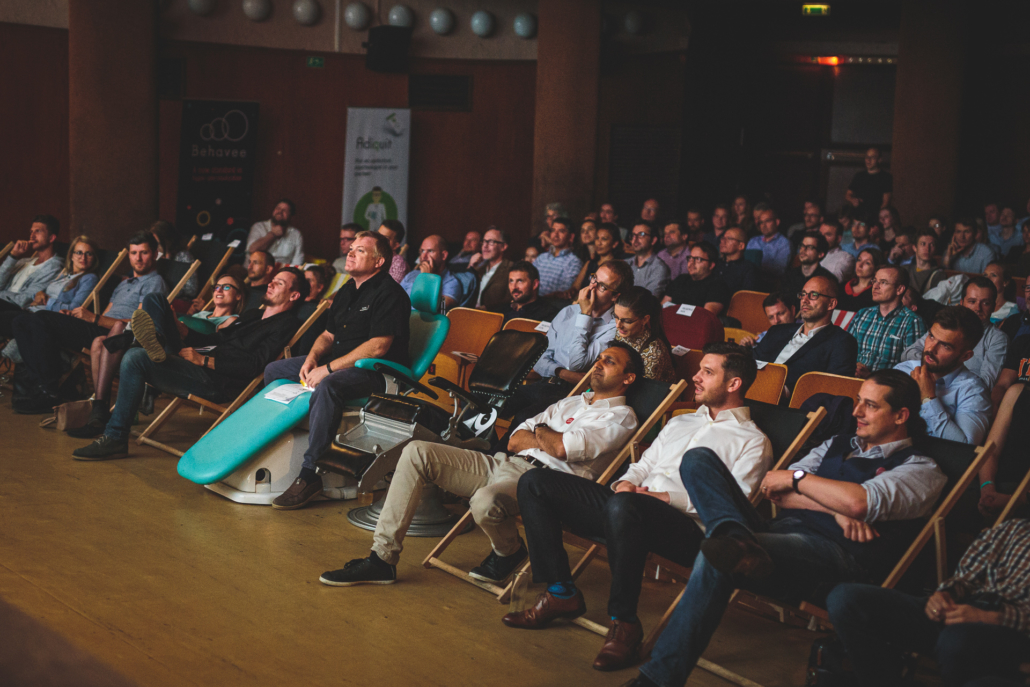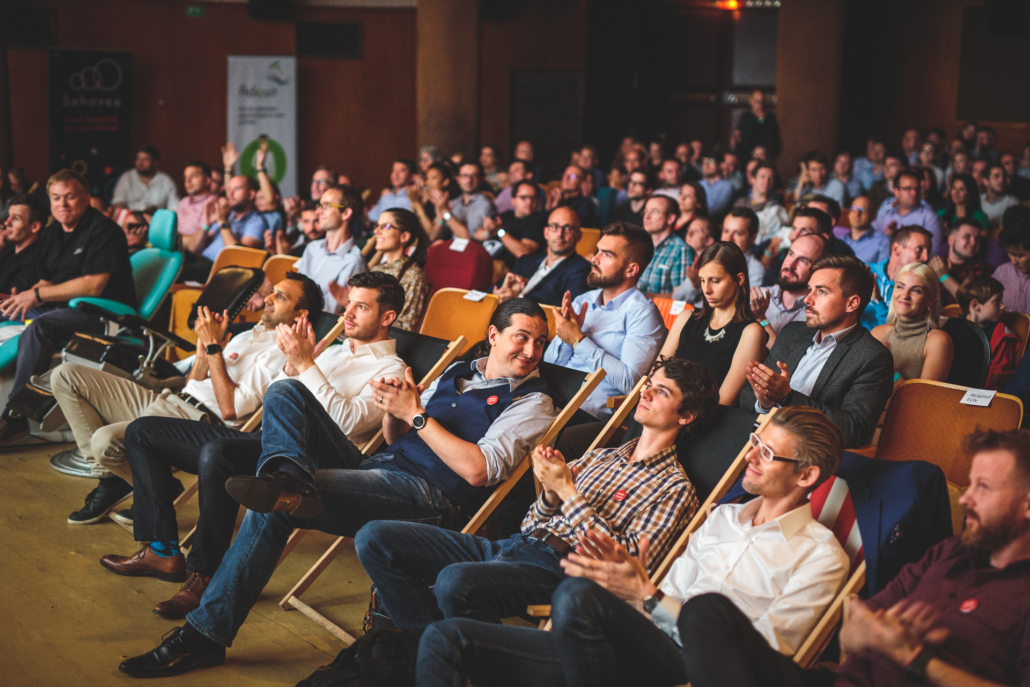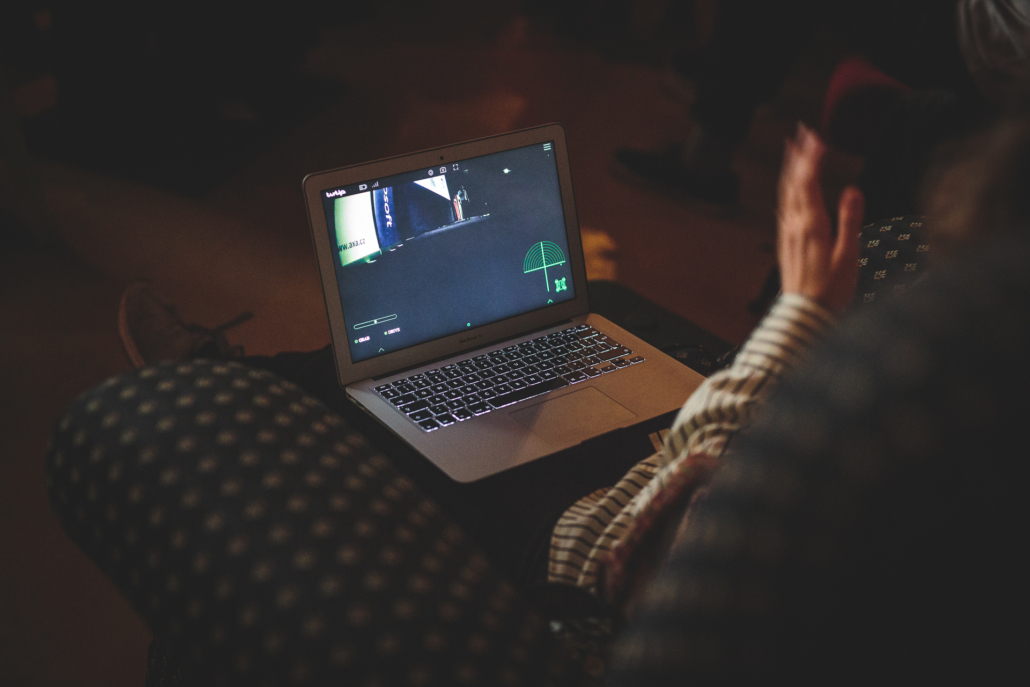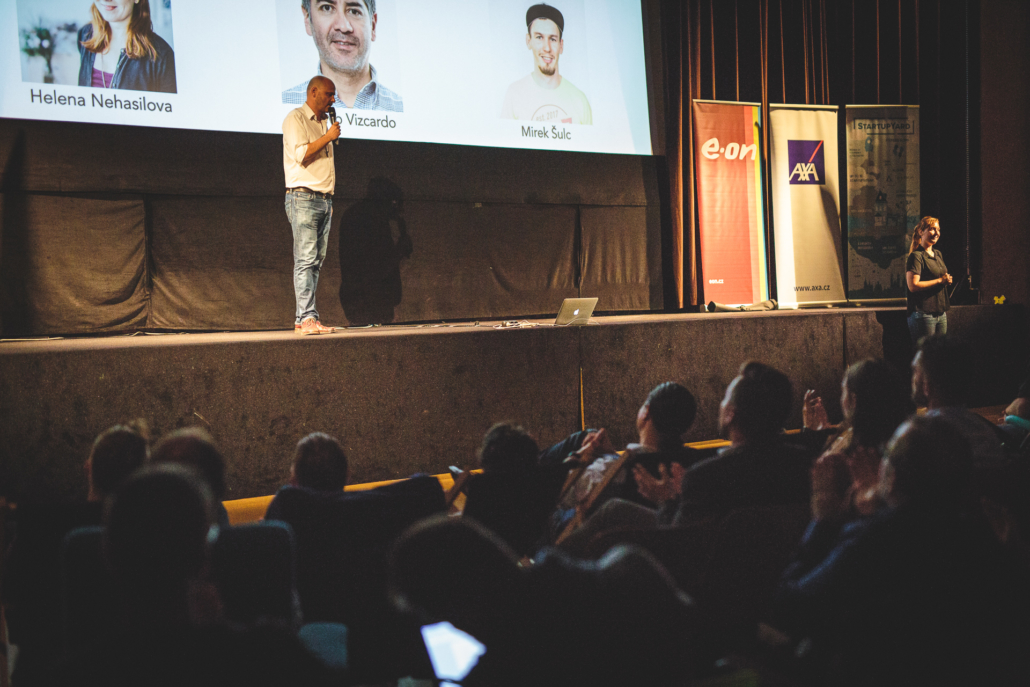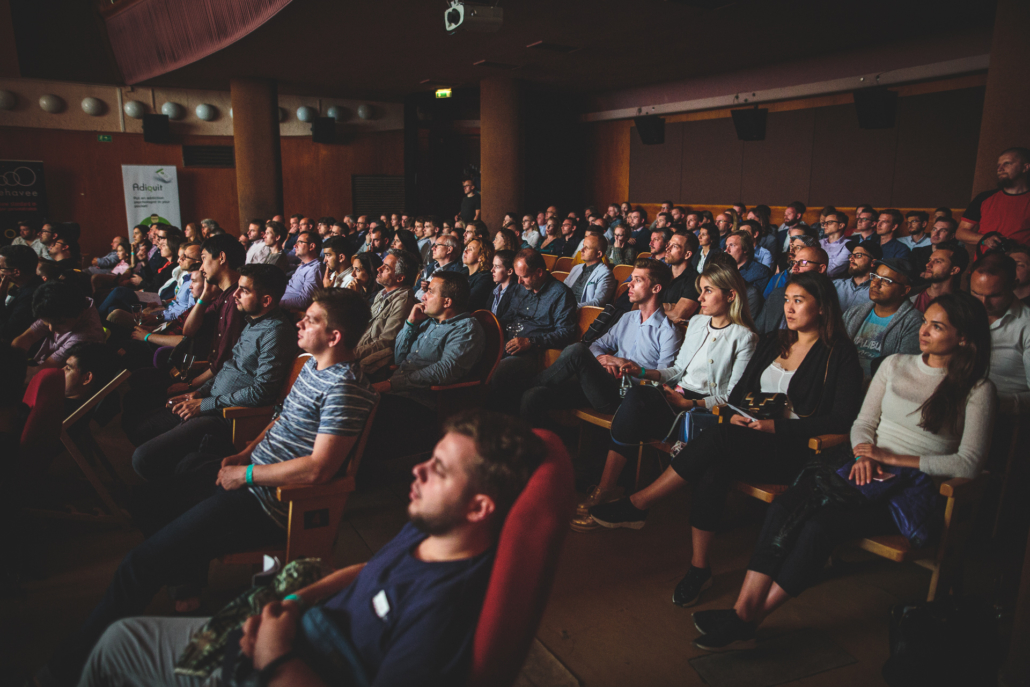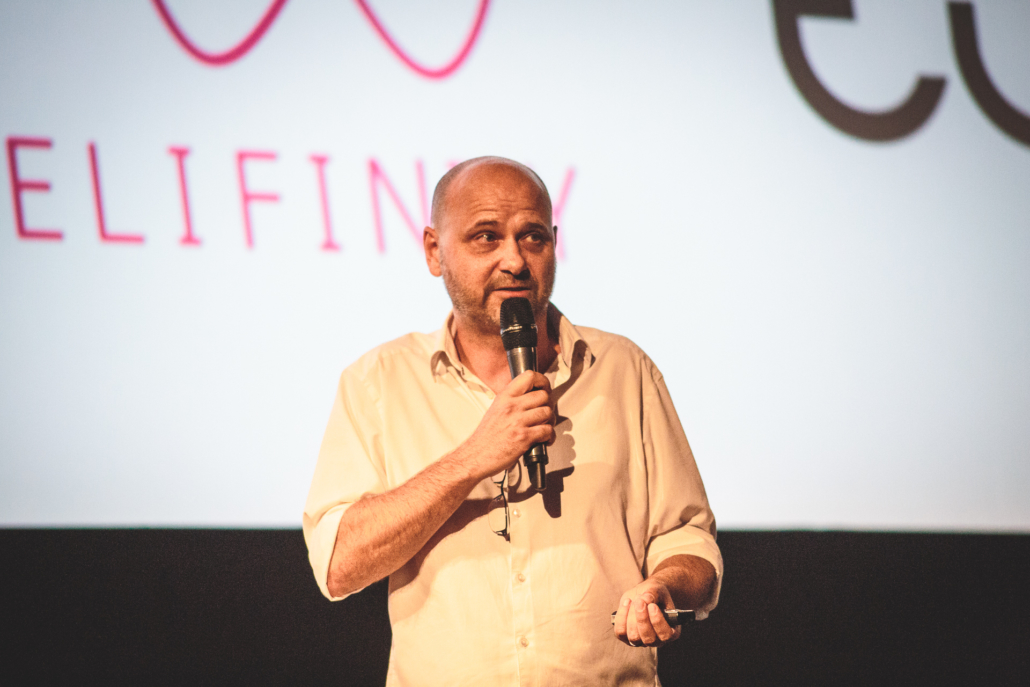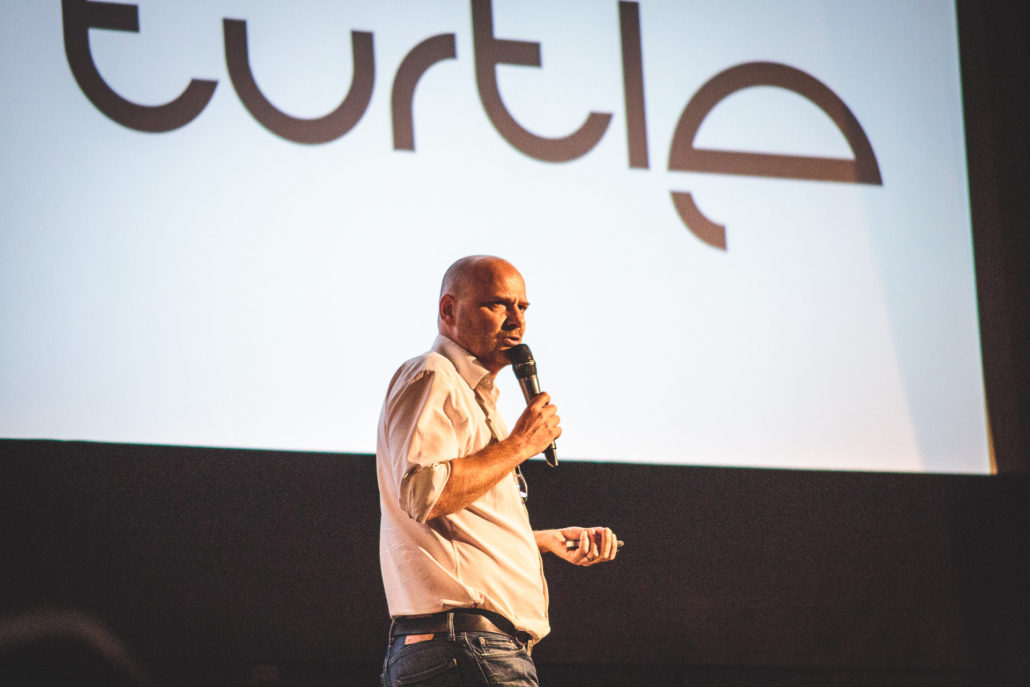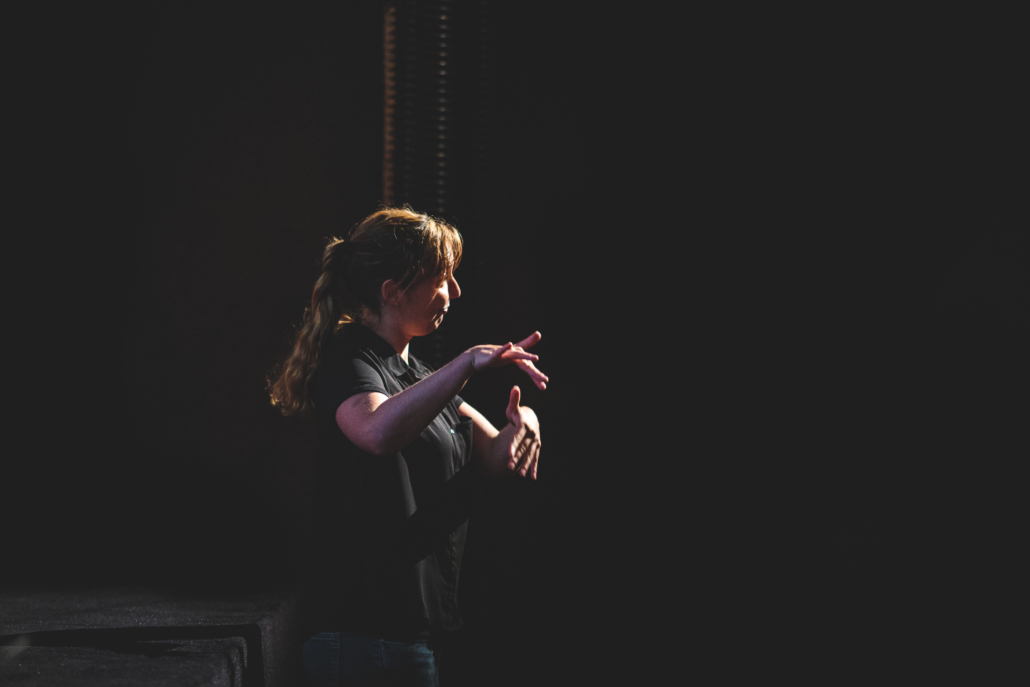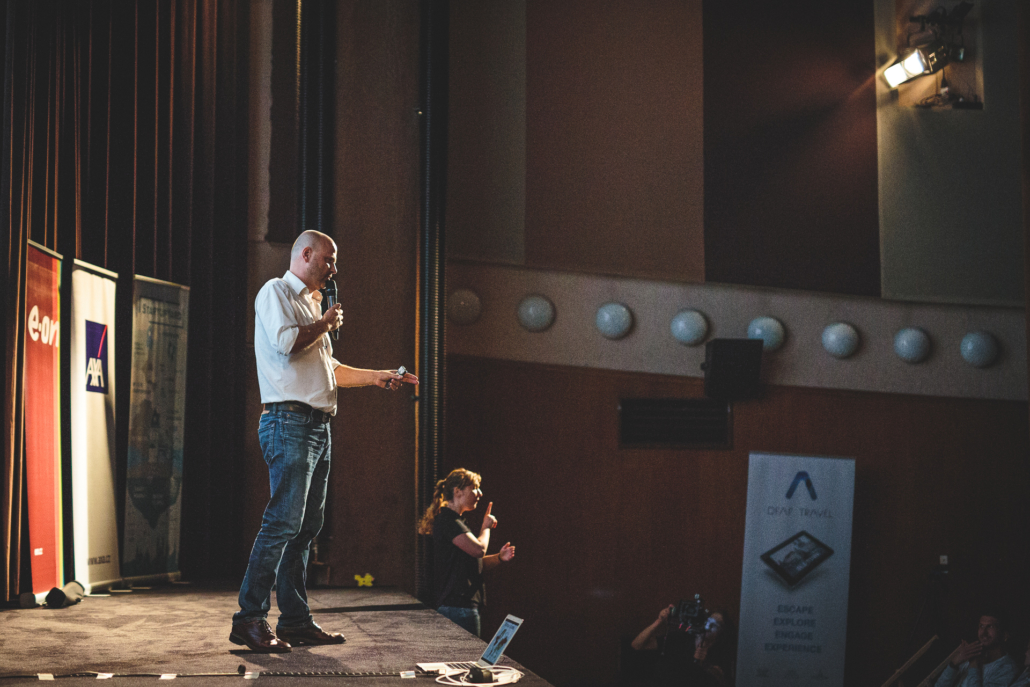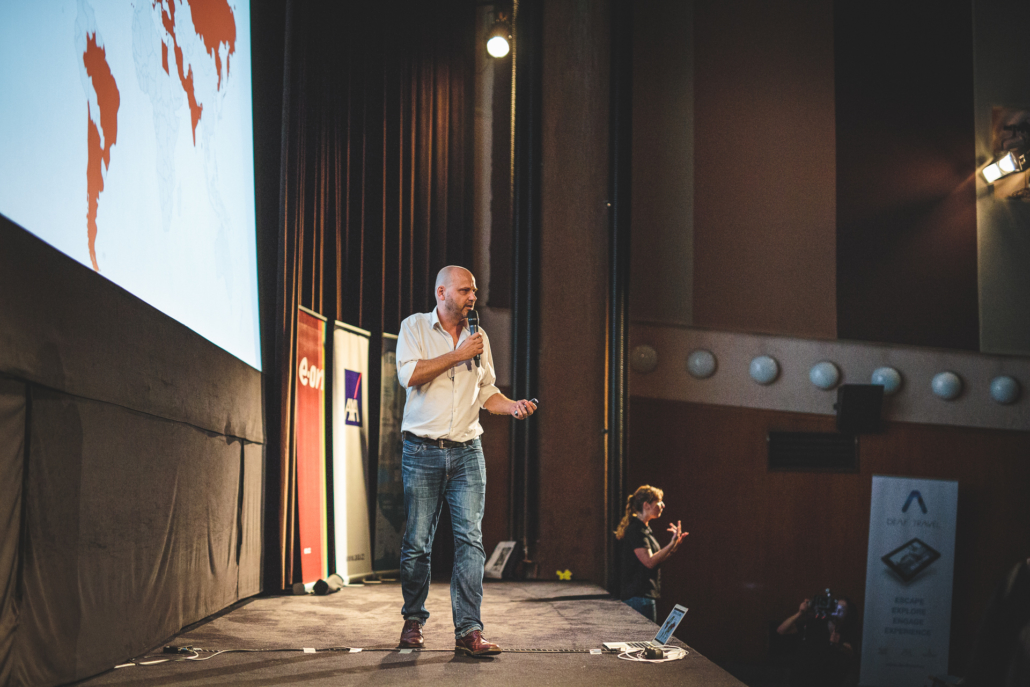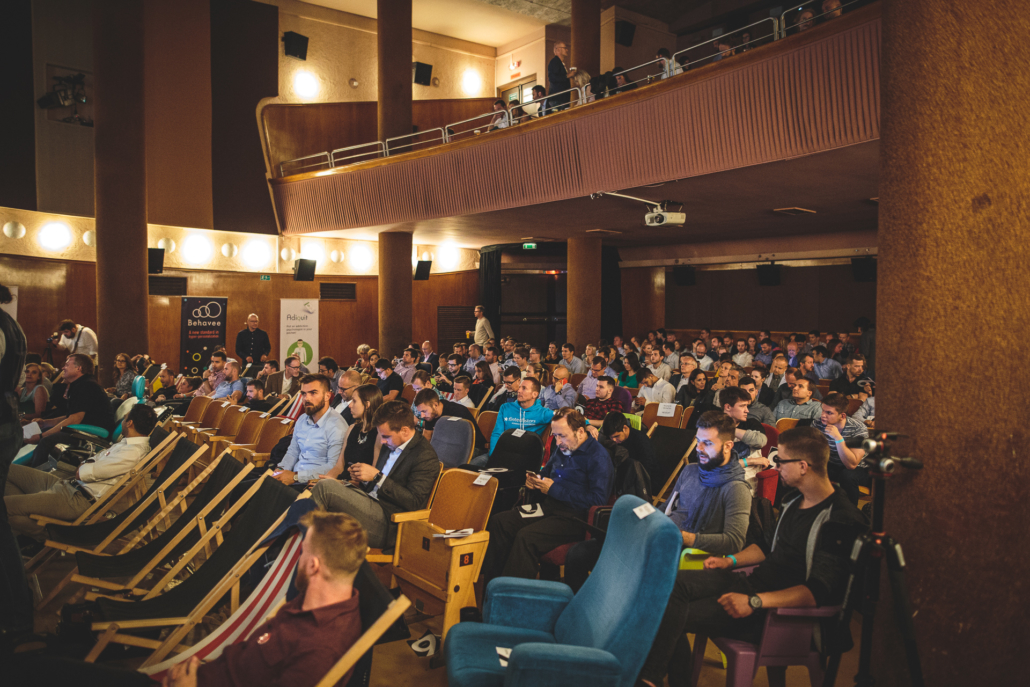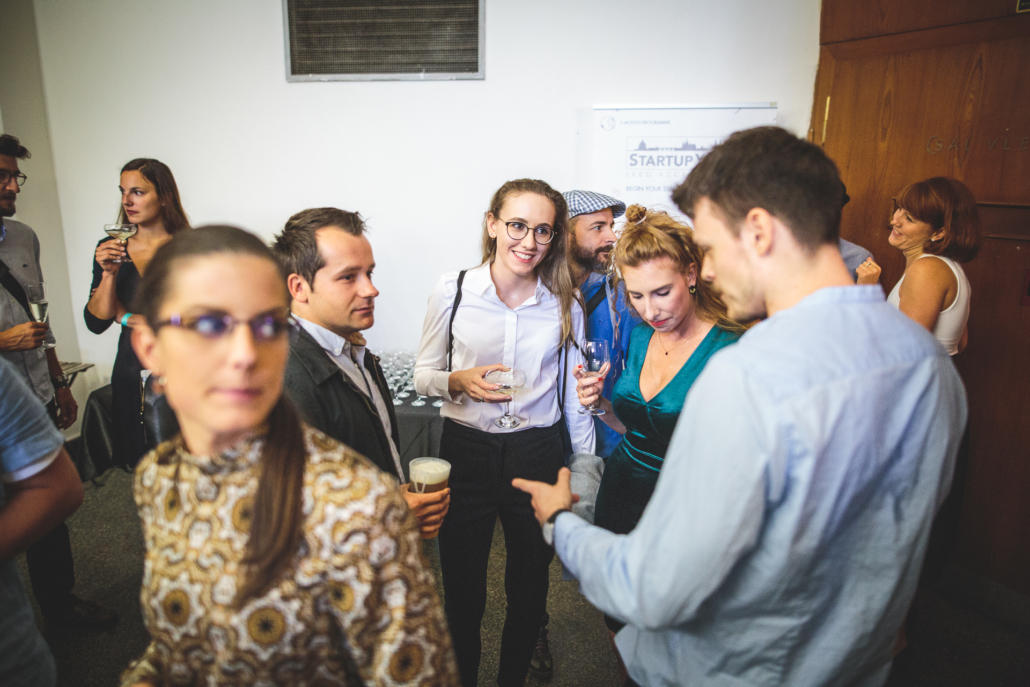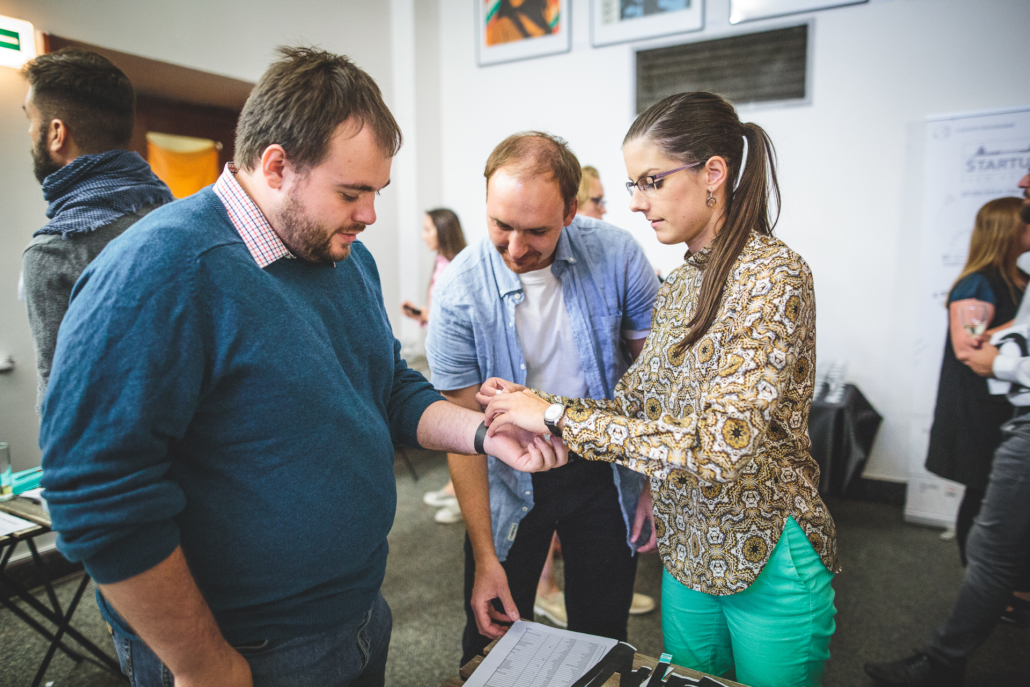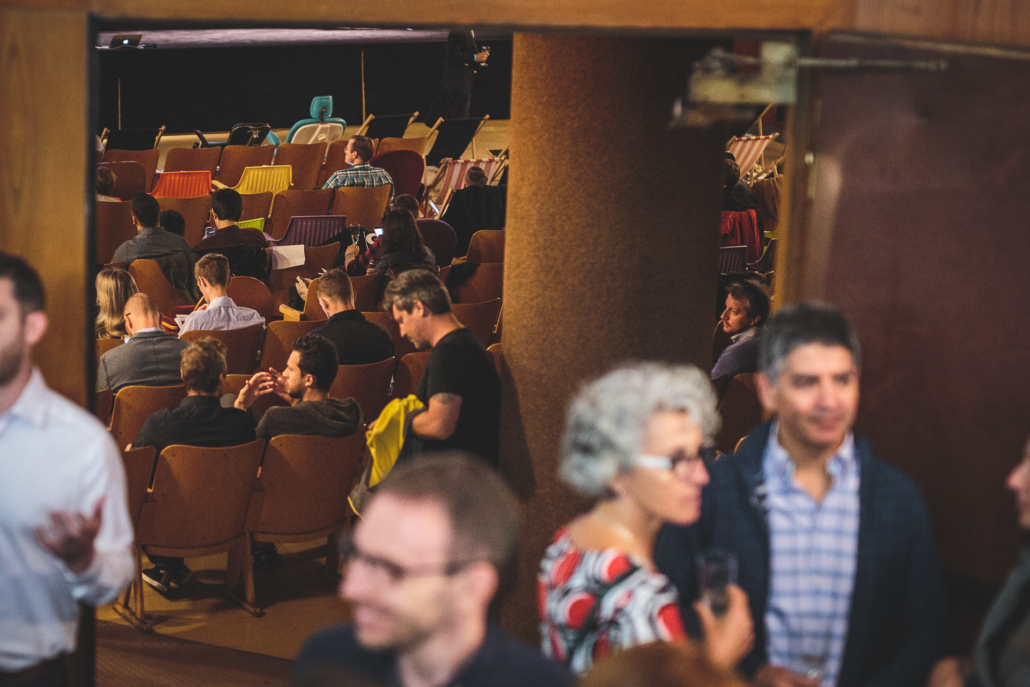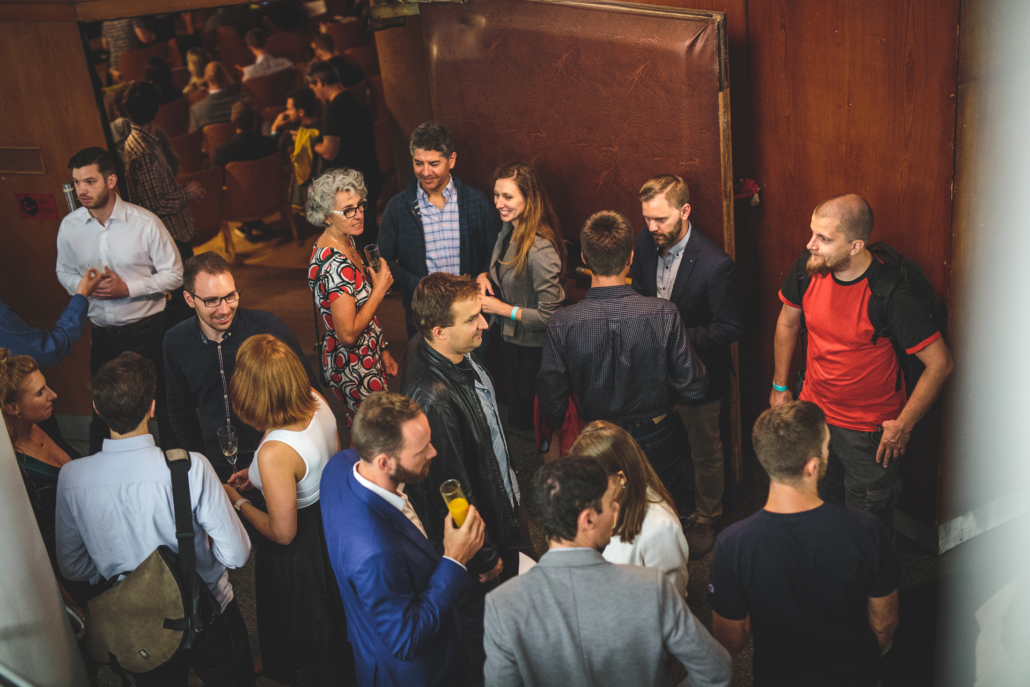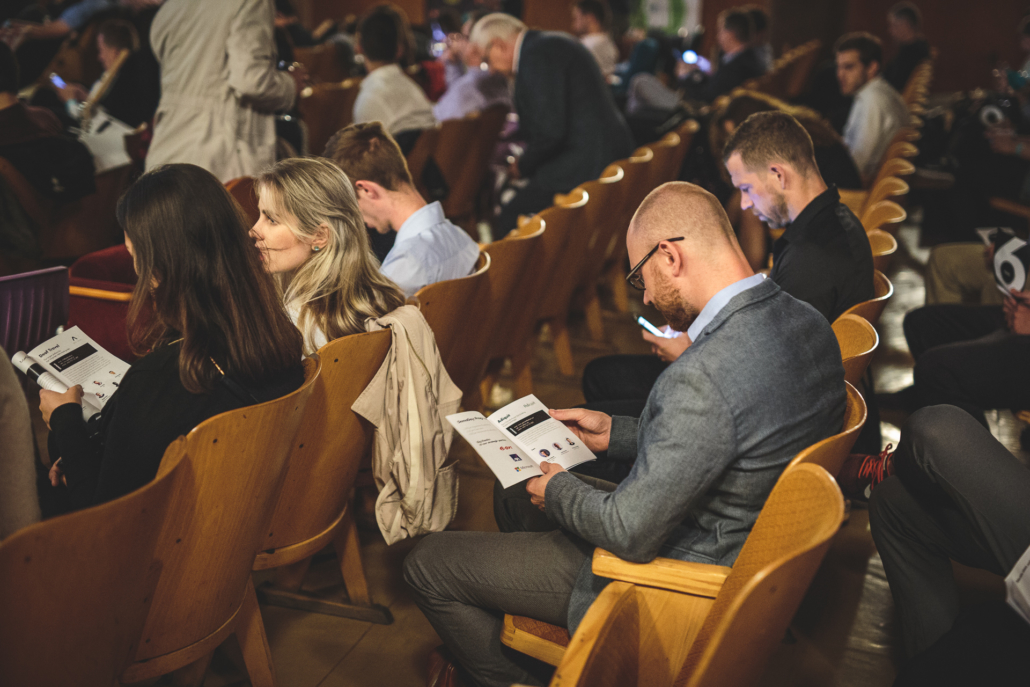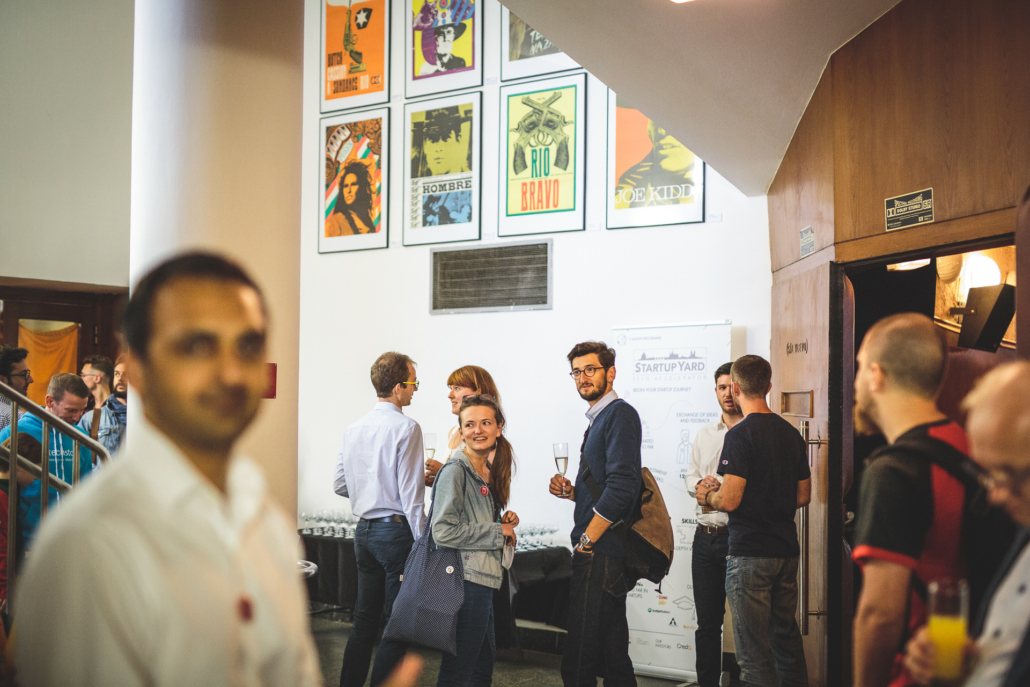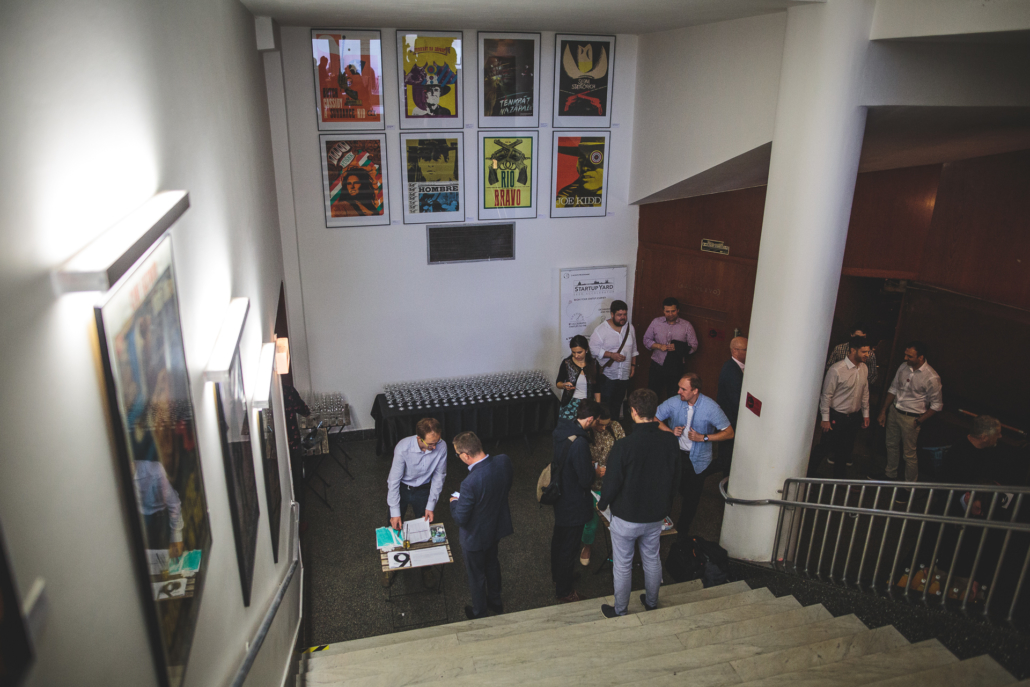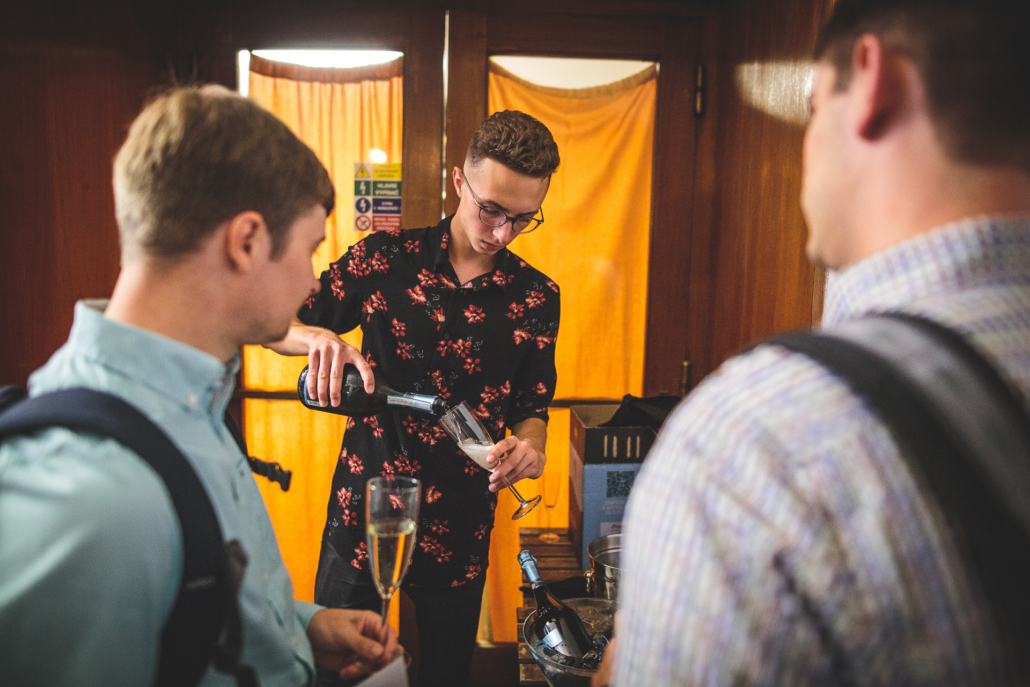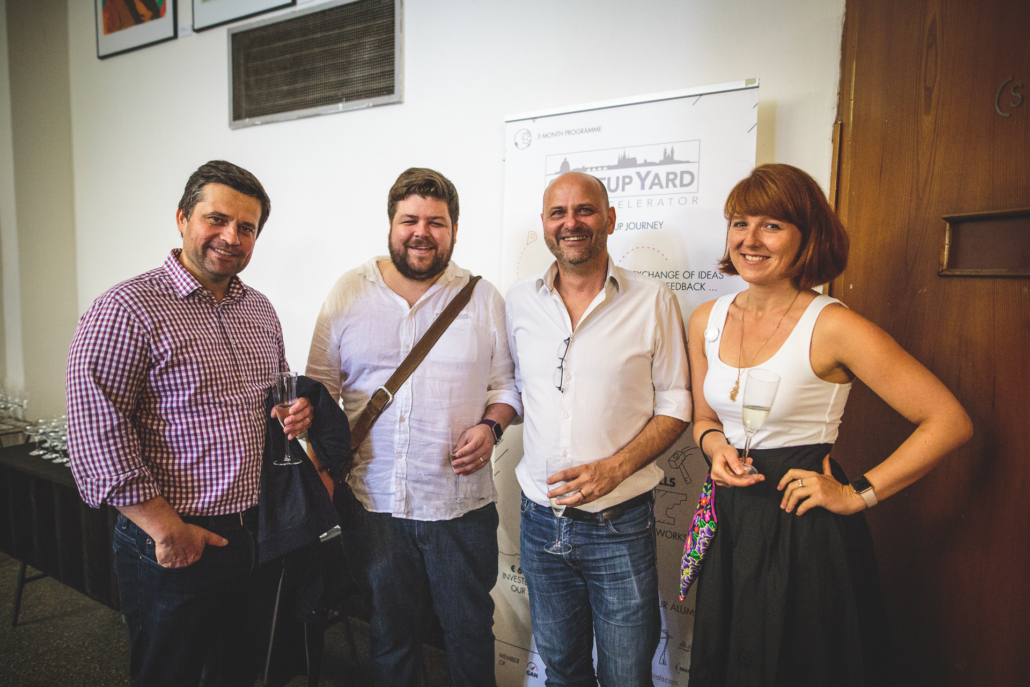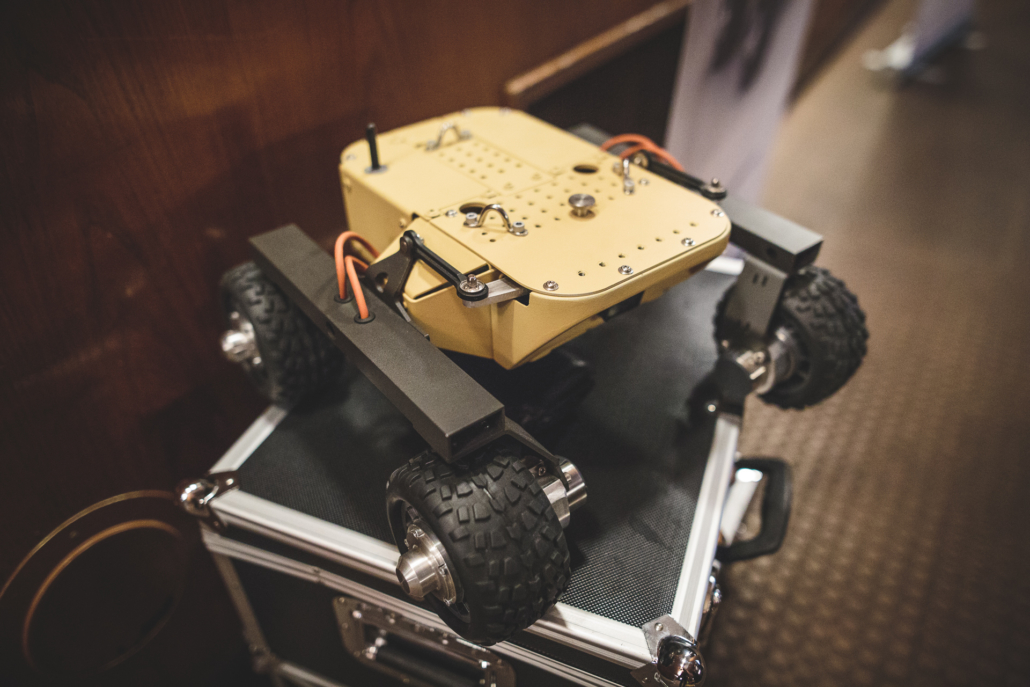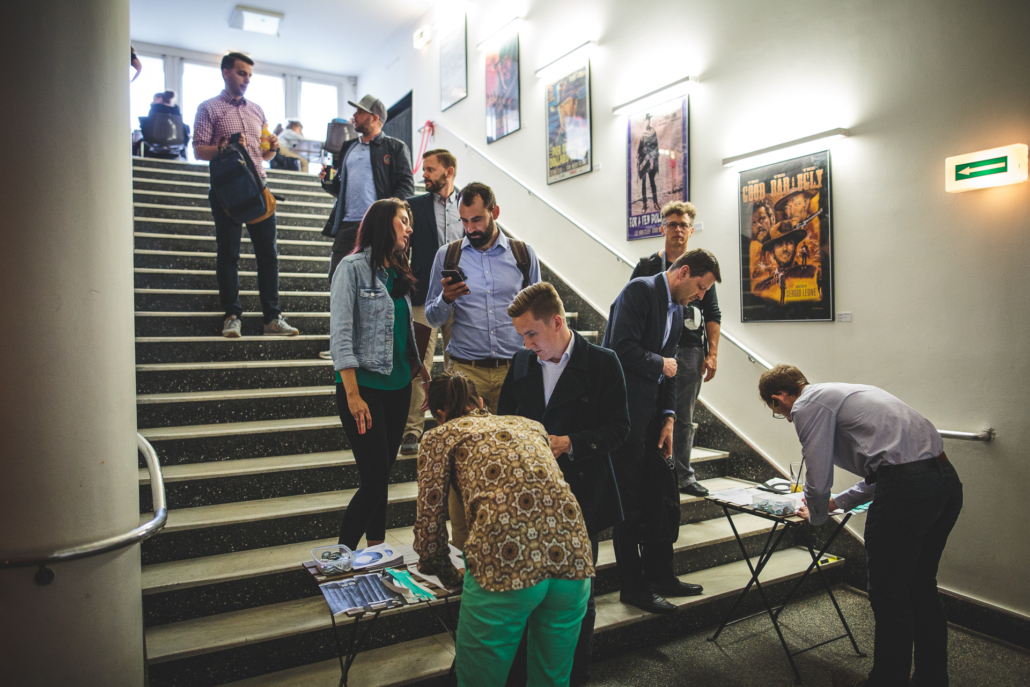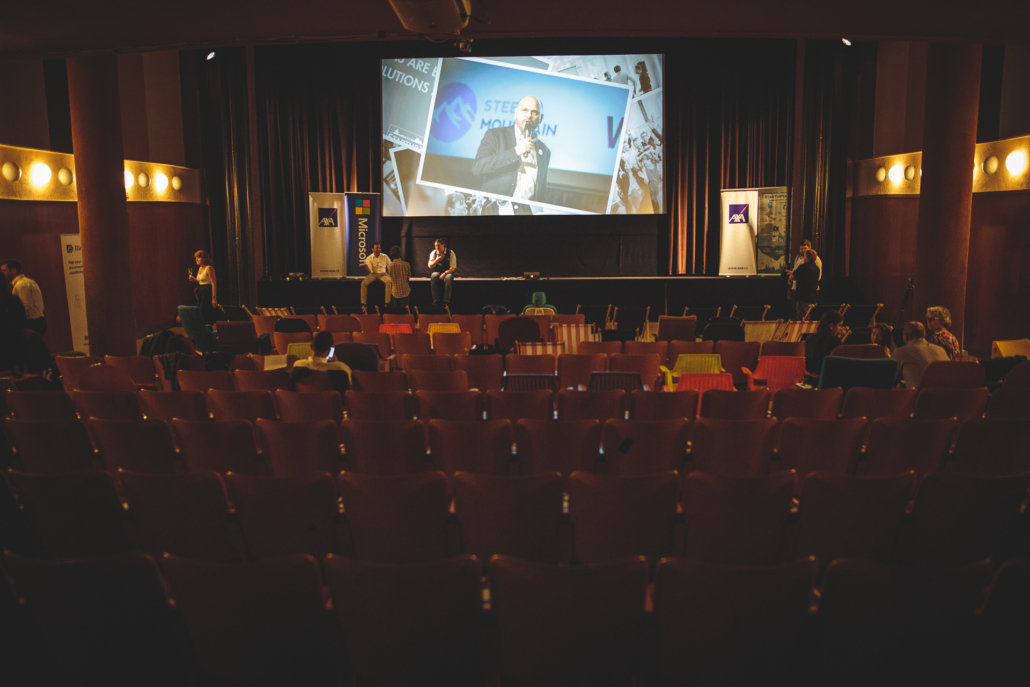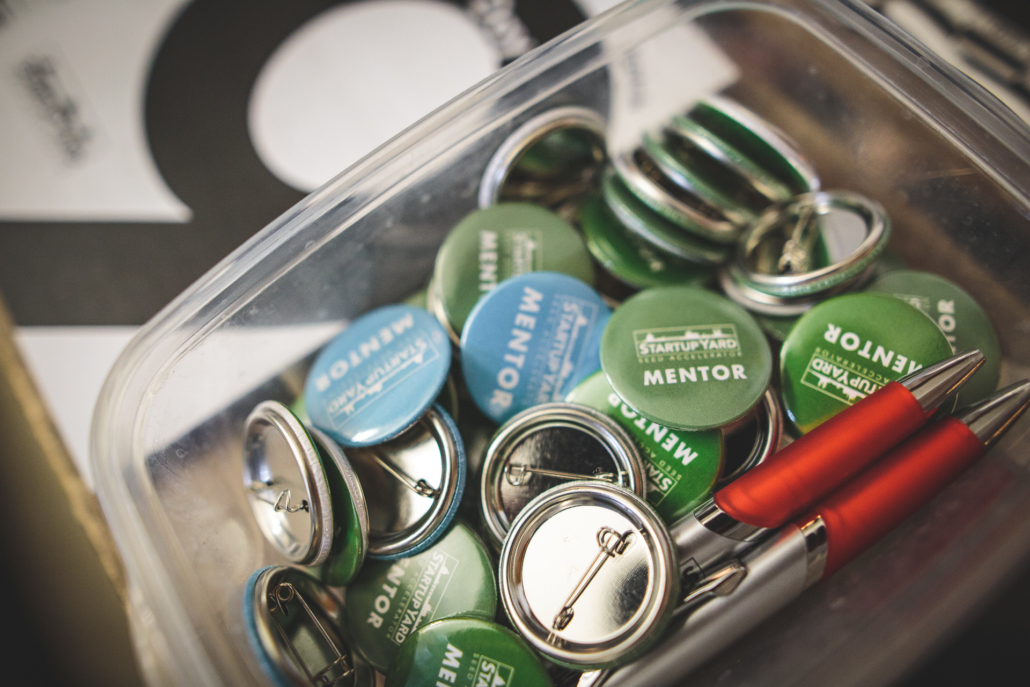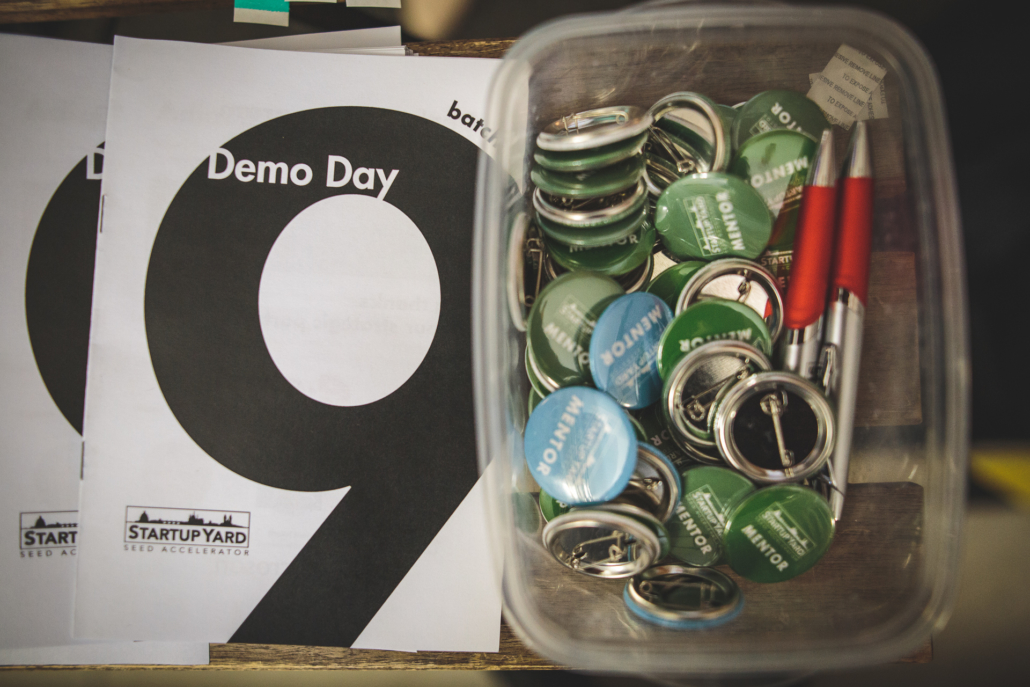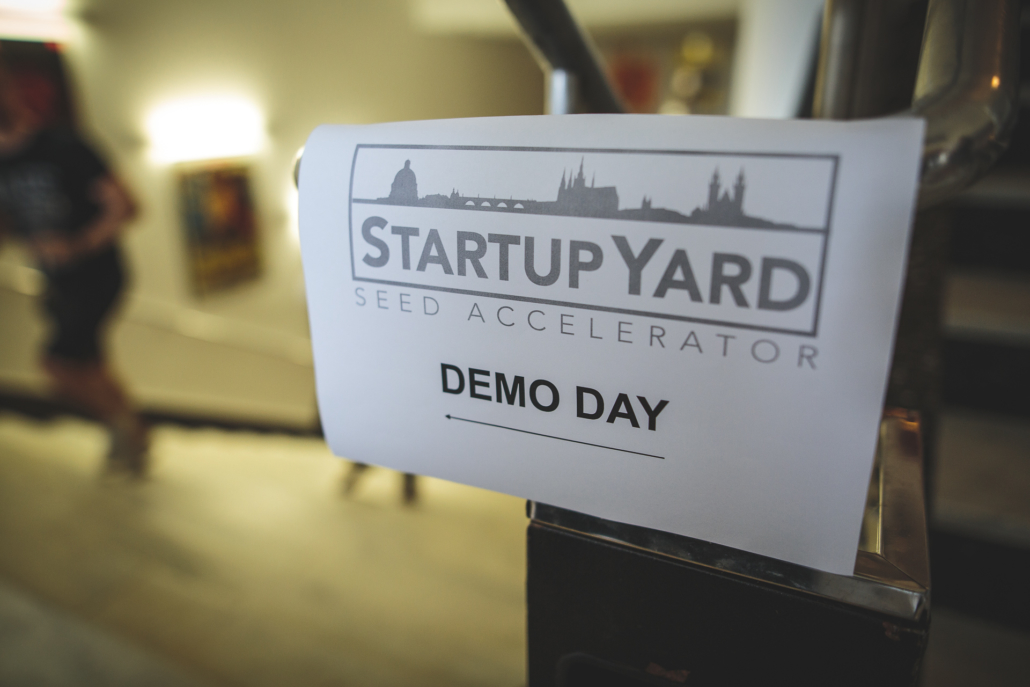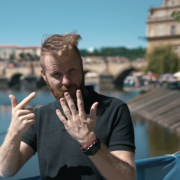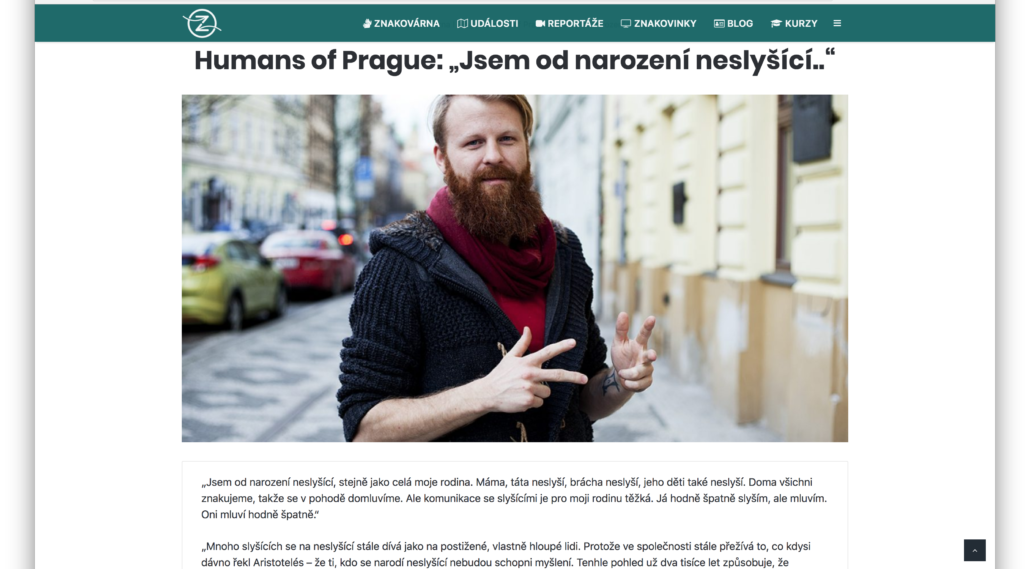Demo Day Batch 9: Full Video and Snapshots
/in Startups/by StartupYardOn Wednesday June 13th, the StartupYard Batch 9 companies pitched for a sold-out crowd of over 250 investors, mentors, media, and StartupYard community members. We can’t express our gratitude to the audience and our pride in the startups who worked so hard to get there, and did so well under a lot of pressure.
If you couldn’t make it, or if you’d like to take another look at your favorite team from the evening, we live-streamed and recorded the whole show, available right now.
Replay the Live event on Facebook: The StartupYard Batch 9 Startups Pitch Live at Demo Day
Snapshots of the Event
Meet Deaf Travel: Building a Better Internet for Deaf People
/in Interviews, Startups, StartupYard News/by StartupYardDeaf Travel, the last of the StartupYard Batch 9 startups to be interviewed, is our first non-hearing team in the program. They are a team of Deaf entrepreneurs who have dedicated their careers to building up the Deaf community, both online and offline. Their mission today is to create an online platform and community focused on helping Deaf people to enjoy travel and adventures with the same depth that hearing people enjoy.
They are doing this by bringing together public attractions and organizations, with the worldwide Deaf community, and offering them a space where the needs of Deaf tourists can be met with Deaf-friendly video content, interactive maps, and other features that make foreign travel enjoyable and interesting. I sat down with CoFounder and CEO Jan (Honza) Wirth to talk about his team’s vision for the future of Deaf tourism and the internet. Here is what he had to say:
Hi Honza, first of all we should acknowledge that there is someone else in this conversation, Tim, your interpreter. As a deaf person, what do you find most challenging about communicating with hearing people?
Most hearing people have many misconceptions about the Deaf. They think we have less intelligence or skills and feel we can’t do many things, such as drive a car, work, etc.
These misunderstandings stem from the communication barrier we have between hearing and Deaf people. If we had a common language, then many of these false ideas would solve themselves. Hearing people can learn sign language, but a Deaf person cannot learn to hear! As a Deaf person, I deal with these barriers every day.
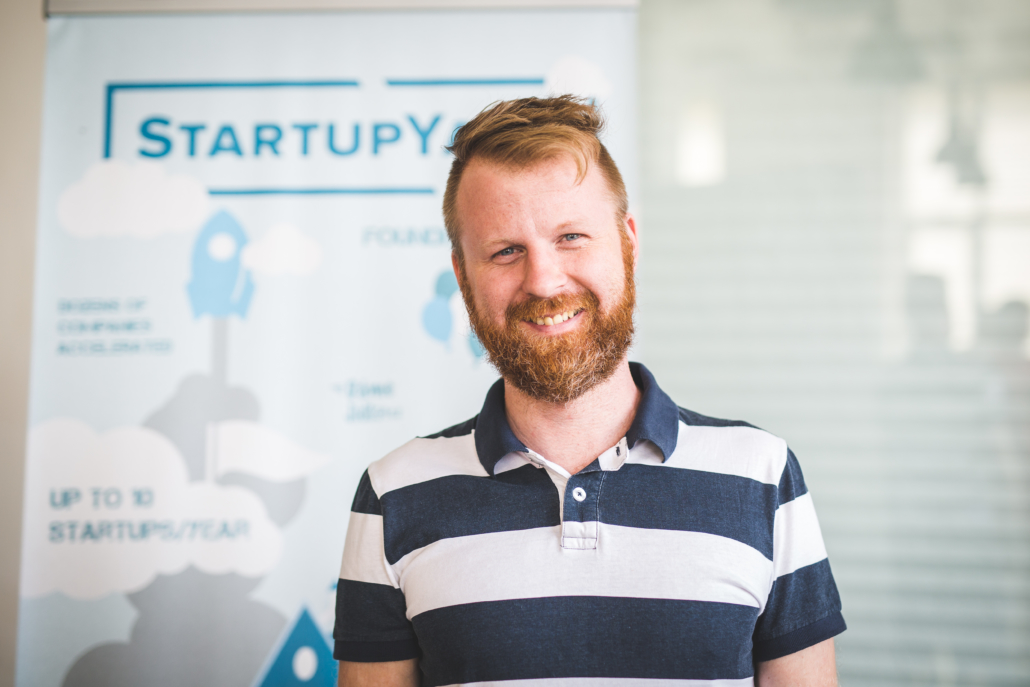
Jan Wirth, CEO and CoFounder of DeafTravel
One of the ways we can solve this is through interpretation. In fact, what many hearing people don’t realize is that interpretation in our own sign language is far superior for Deaf people than simply reading. Written and spoken languages, such as English or Czech, are native for hearing people, but they are always second and third languages for Deaf. I can write and read in English and Czech, but for me that is a very different experience than it would be for a native speaker. Writing is the same: we must translate our thoughts into a foreign language in order to write. Thus even in writing, an interpreter is very helpful.
I use different methods to try to break through the communication barrier. If I have to communicate about something very important like a mortgage, legal issue or a job interview, then I use an interpreter for clear understanding for all. In common interactions like a restaurant, ticket office or a shop, I can use gestures and writing back and forth. It is for deeper discussions that an interpreter becomes essential to bridge the divide.
How did you come to found DeafTravel, and why is a for-Deaf, by-Deaf travel platform so important to the Deaf community?
I have been dedicated to improving the Deaf community my whole life. I am the founder of our first community center in Prague, called Znakovarna. This is a place where Deaf and the hearing can gather to discuss new ideas and learn from each other, and support each other and the community. We host seminars, talks, and other Deaf-oriented events. Deaf Travel is one idea that comes from seeing what Deaf people talk about and what they really miss in the market, which is a way of getting this Deaf-friendly experience wherever they go.
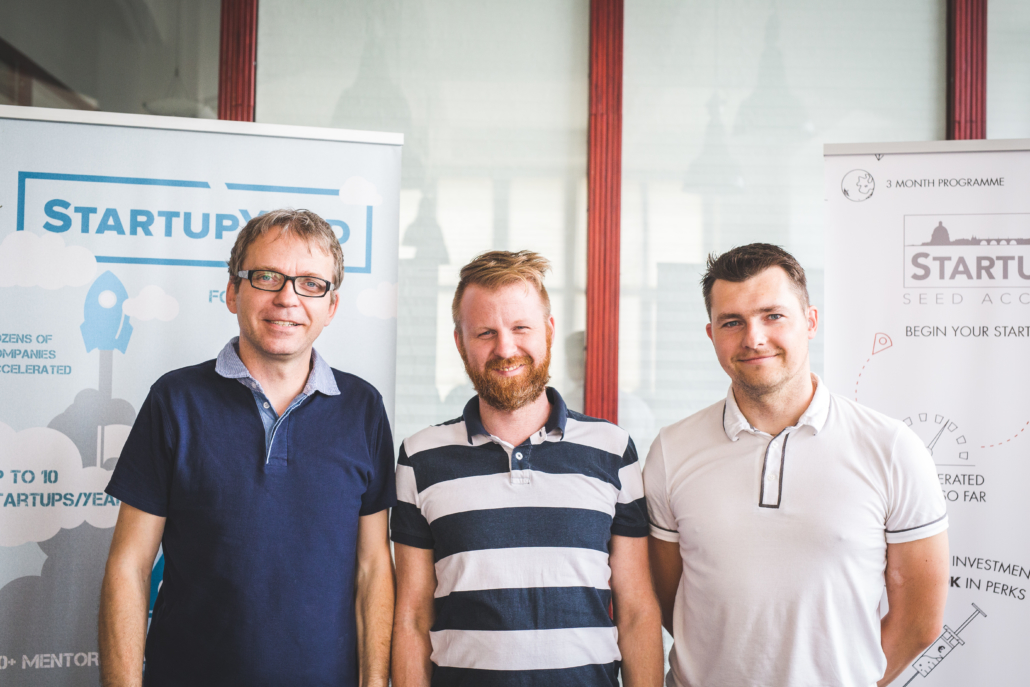
The Deaf Travel Team. The majority of the founders are deaf or hard of hearing.
Nowadays, smartphones are common within the Deaf community and they have a huge positive affect for us. Such technology and the ecosystem of apps allow us an equal footing for chatting and staying in touch with our friends and family via video, or text. We can use our native sign language to make quick interactive video chats. We can even use some interpreting services via our mobile phones, which opens doors that have been shut to Deaf people until now. It is a great time to be alive.
But mobiles haven’t solved all the everyday barriers for us. Yes, the tech is amazing, but they aren’t the ultimate answer for the barriers we have, especially when we travel. In the USA, the benefits for the Deaf there have skyrocketed, but these don’t spread worldwide for various reasons.
One of those reasons is that European and worldwide Deaf communities have many sign languages, just as hearing people have many languages and cultures, and so there are always added challenges for smaller Deaf populations to find content in the sign language which they use every day. Those of us who travel, especially in Europe, learn International Sign System (IS), which is not an actual language but follows the rules of most sign languages and uses signs from various sign languages.
Let us not forget, even when a Deaf person does understand multiple sign languages and written languages, this does not change the fact that other Deaf may not have those skills. Hearing and sighted people take the internet for granted today. You can Google anything, and find whatever you are looking for. But how does one “Google” content which is in a sign language? How does one tell Google the signs they want to search? Of course these functionalities are not available.
Think of it like this: imagine the internet was only in Chinese, and to use Google, you had to learn how to read and write in Chinese. Not impossible! But very hard, and very unnatural. You would not find the internet so useful if the only way you could communicate and consume content was in a language that is not your own. Thus, Deaf people are discouraged from creating and sharing content, because other Deaf people cannot find and use that content very easily. It means that for many purposes, the internet as you understand it is beyond our reach.
On the close horizon, we have newer tech, virtual reality (VR) and artificial reality (AR), that has great potential for us all. For the Deaf it could mean even better access to information, because we are such visually-oriented people. VR/AR means more access to interpretation and visual information displayed in a Deaf-focused way.
Still these technologies are yet to become reality. We want to begin to change that, and we understand that the way to do it is to begin using what we have to solve the problems of Deaf travelers. Deaf Tourism is on the rise, and we can feed and encourage this with content and a community in the format that Deaf people will really be able to use, and ultimately contribute to themselves.
Our platform can give deaf travellers access to information equal to hearing travellers, just by using the smartphones or other devices that Deaf people already have. It’s a visual platform, using maps and images to help Deaf travelers find content focused on the sites they are visiting. Eventually, we will be able to provide a forum for the Deaf to create and share relevant content, based on real world landmarks, much in the way that Yelp, Google, or Facebook function for hearing communities today.
Many of our mentors and investors have been surprised to learn about the difficulties that deaf people have with getting information in a format they can use. Can you talk about why reading and writing are such a challenge for the deaf?
There are two main problems that are caused by many forces, socially, economically and politically. In addition, these problems are worldwide in varying degrees.
The first is that education for the Deaf has been historically lacking, sometimes pathetic, and often downright horrible. For most of history, we have been treated as mentally disabled by society, because people did not understand that we can learn and think just as hearing people do if we are educated in a way that makes sense for us.
The curriculum in most Deaf schools is not the equal to the what is taught in hearing schools. As well, the Deaf students who are sent to the hearing schools do not always have a quality interpreter. These same students also have less socialization with their hearing peers, since the language of the hearing school is spoken.
The second problem in both of these types of schools is that the teachers usually don’t know the students’ native sign language. Which means the student is using an interpreter, or even nothing in many cases. The student is simply expected somehow to adapt. Most deaf schools in the world focus on making the students learn to speak, and the actual education is dismissed as less important. This is sad, since teaching speaking to Deaf is rarely successful or needed.
This is treating the Deaf as if their goal in life should be to compensate for their lack of hearing. I think that’s just silly. I wish to live in a world where the Deaf are treated as different, and not as disabled. We can teach and learn from each other, and we have rich cultures and languages to draw from.
As I think the StartupYard team have learned from us during our time together, we can share our ideas and our dreams with a little shared effort. The Deaf have much to offer and indeed to teach the hearing, just as we have much to learn.
Let’s talk more about Deaf Travel: what does the solution look like today, and how can people use it?
Our first focus is on proving the value of Deaf content for travelers. We are doing this by focusing on getting landmarks and tourist locations and attractions interested and involved with the platform. This means creating content focused on these locations, that the Deaf can use in place of guided or audio tours, and also content that the Deaf can use to do their travel research, such as deciding what monuments to visit, and even finding Deaf-friendly services in the destination city or country.
This means a Deaf tourist can experience the story of the site in his own native language without being dependent on others. The Deaf tourist today has little freedom of action or choice in making travel decisions. If we do not depend directly on others to help us plan and navigate a trip, then we still must face a lack of depth and context in what we see and experience. Tell me how many times you would go to the cinema if the sound was always turned off? That is the experience we face almost everywhere, and the worst outcome is simply that we choose not to go somewhere new.
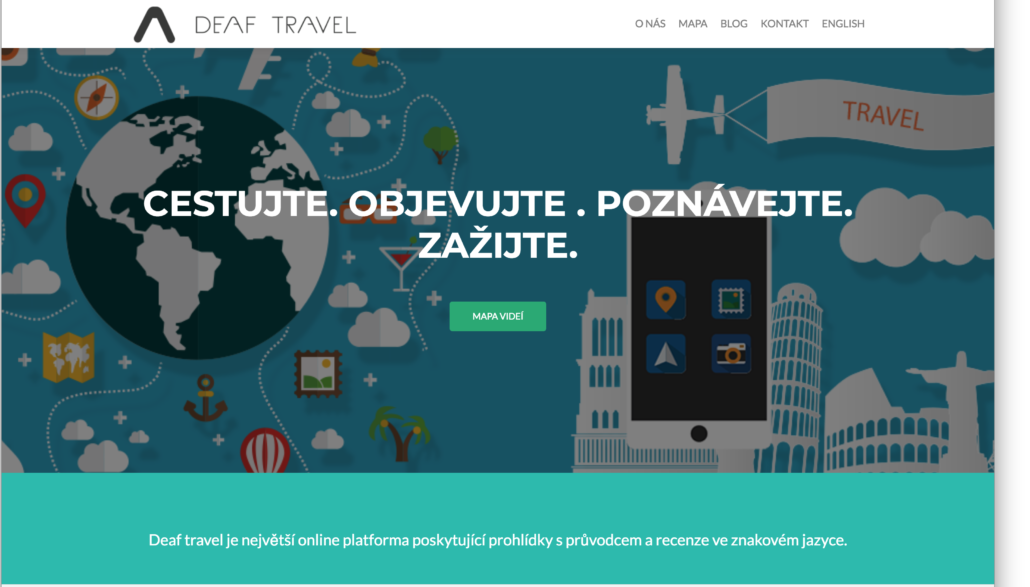
We want to create a way for Deaf people to enjoy traveling, and also a reason for Deaf people to travel and experience more. If more content and services exist and are accessible for Deaf people, then more of us will travel, and so even more demand will arise for these services. We want to prove now that such a demand does exist and that it will grow when attractions and cities invest in building up their ecosystem of Deaf resources.
What do you want Deaf Travel to be a few years from now? How will Deaf people use it in their daily lives? (note: talk about tripadvisor, Yelp, deaf reporting, etc)
It’s simple really. We envision individual Deaf travellers accessing our platform of videos via our Deaf Travel App. Similar to the services of Tripadvisor or Yelp, our app will be a community of amateur and professional deaf video “reporters”. Each reporter will upload their videos to our server and the community can search for, watch and review individual videos and locations, based on visual maps instead of text search. They will be able to use it in their daily travels at locations around the world.
The key is to create this connection between the “local heroes,” and the travelers. You can be a local hero in your home town, who makes videos and helps visitors, and you can benefit from the work of your fellow heroes around the world when you travel. You can also create content as a traveler, aimed at your own community, who may also travel to the same places in the future. This new online community platform will also be a place for promoting Deaf-owned or Deaf-friendly companies, Deaf events, interpreting and other services.
Deaf Travel will be supporting the community so that the community will support itself. What do you think happens when one restaurant in Prague becomes known internationally as the place to be for deaf visitors? I can tell you: it will be very successful, and this will allow entrepreneurs from the deaf community and from outside it, to explore new opportunities. It is a big, untapped market that is still invisible to most people.
How will Deaf Travel deal with the complication of having many different native sign languages that travelers know?
Yes, many people think that there is one universal sign language, as I mentioned. I’m not sure why! I mean how would you get people in every country to agree on one language when each culture is different? Yet people think we Deaf could do this ourselves.
Karlův most, Praha (ČZJ) from Deaf Travel on Vimeo.
Each community in each country has its own natural sign language which is connected to that culture, as all languages are. After all I am a Czech man in addition to being Deaf. I need a language that fits with this identity, and it is the Czech sign language. Each sign language has different dialects as well, just as spoken languages do.
How do we solve this situation of such diversity?Deaf Travel will use video reporters in each country to have that local sign language in the videos there, in addition these videos will have a second communication mode called International Sign System (IS). This fills the function that English fills for many international travelers.
Not everyone knows IS, but most Deaf tourists have learned it by travelling and meeting other Deaf in their travels. IS was developed by Deaf in the European region where many languages and cultures converge. It uses the basic visual grammar, syntax and structure that almost all sign languages have. It then adds clear vocabulary from various sign languages. It is not a pure language, but a good method for everyday communication.
Today you’re looking for tourist attractions to join you as partners to create quality content for their deaf visitors. That is hard to scale. Over the long run, how do you see the platform being monetized and growing as a business?
As I just mentioned, the community of travel vloggers and reporters all over the world will add to our video library quickly.
A traveler in Peru and a traveler in Germany could upload their videos during the same week, but from different trips, and thus we’ve increased our library by several short videos in two different countries in the same week. Those videos will be catalogued and tagged on the appropriate map for that region. The map with these pinpointed videos will be the growing visually searchable platform for other Deaf travellers.
Understand that the Deaf community is small and news always travels fast within our network. Awareness of Deaf Travel’s platform will equally spread like wildfire, because Deaf travellers will be eager to add their own amateur travel vlogs to the database alongside our professional ones to share their experiences, good or bad, with the community. Everyone has a need to communicate and to help each other. You just need a way to do it.
These videos will be accessible for free or for a monthly subscription price for our full-length professional travel vlogs. In the world, there are approximately 466 million Deaf and Hard of Hearing. 70 million of those use a native sign language, for those who do not, we will offer subtitles as well. So, the market potential is great and will sustain our mission of supporting the community by tearing down the travel communication barrier.
You’ve been our very first Deaf founding team at StartupYard. How has the experienced matched up with your expectations? What have been the biggest surprises?
Overall, the experience has been amazing. There were a few moments when things did not click with us, but I’d say 99% of the people we met and worked with were great.
At first, I was truly shocked that we were picked for StartupYard. I didn’t think there would be much interest in our project. Then after meeting so many mentors and EVERY one of them showed interest in our vision, our motivation increased exponentially. We now feel like we really have something that will make this dream of barrier-free travel a reality.
Perhaps I did not have enough faith in hearing people to see the potential that we see in this idea. However I have seen that this is a problem anyone can understand, and it has been wonderful to see that others who have not experienced these same problems can deeply empathize with it.
As the StartupYard team have told us many times, what we do must become somehow obvious on first sight to people with no experience of the problem. That is something I think we have accomplished and it is really exciting to be able to open people’s eyes to it.
What kinds of partners and potential clients are you looking to talk to right now, and what’s the best way for them to start cooperating with Deaf Travel?
That’s a great question. We’re looking for well-known tourist destinations that attract thousands of tourists every year. The kind of places that are famous and have a very interesting story to tell, like cities such as Prague, castles, zoos, museums, and other such attractions.
Lesser known sites are also of interest to us, because our mission is about equal access to information for our community. It is our way of supporting the social and civil rights laws in place now. We don’t want to be dependent on others to provide these services. We know what we want and need. The world has provided us with the political backing, and we want to partner with those who support this vision too.
We don’t need people to see this necessarily as a charitable or humanitarian activity. It is an opportunity for Deaf and hearing people to fill a great need that exists and to build new businesses and provide all-new services. Invest in serving the Deaf community and we will vote with our money just as everyone does.
Thus if you are a forward-looking institution or a business, that can see a great opportunity to lead the pack and be a magnet for Deaf tourism, then we want to talk to you. If you are an adventurous Deaf person who wants to serve the Deaf community, or an entrepreneur who wants to explore a new market, then we want to talk to you.
Meet Behavee: The Future of Recommendations is Open Source
/in Interviews, Startups/by StartupYardStartupYard Batch 9, has been defined by “tech with a soul.” That trend continues even when the focus of the startup is on what people traditionally think of as a dry and boring topic: big data, behavior analysis and product recommendation.
That’s because Tomas Pluharik, CEO and Co-Founder of Behavee, believes strongly that the future of recommendations is at once more personal, and more private. Behavee is focused on providing e-commerce and content companies with the tools to truly understand their customers, but without breaching their privacy or mining their personal data and shopping history. They do this by training their machine learning systems to understand how customers behave, and use that knowledge to create instantaneous micro-segmentation of customers based on what they are interested, and what they really want – not just what a company wants to sell them, or what they’ve bought in the past.
To do this, Tomas has arrayed a team of experts in big data, marketing, machine learning, and software engineering with a strong corporate background, who are tired of the way big data is being used for marketing, and believe there is a better way. Behavee is an open-source recommendation engine that learns from its experiences, but doesn’t violate your privacy.
I sat down with Tomas to talk about his vision for the future of marketing in an age of privacy and a post-GDPR world. Here is what he had to say:
Hi Tomas, tell us a little about yourself and your team. How did you all end up together founding Behavee?
We’re a team of corporate refugees who have all worked many years at the Big 4, banks, telcos, and pretty much every big corporations you can imagine in Central Europe.
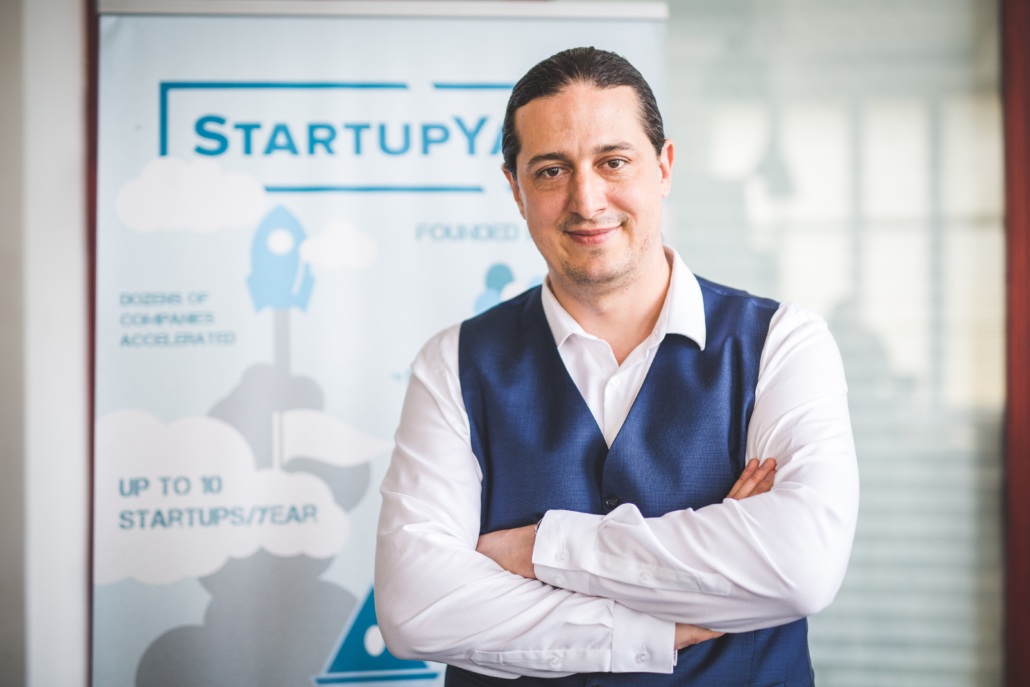
Without getting into too many of the messy details, I originally hoped to form a spinnoff from one of the Big 4 consultancy firms, to pursue what I found most interesting about big data, which I’m sure we’ll talk about here. Anyway, that experience showed me that my colleagues and I were living on a different planet from our superiors, and we needed to escape to startupland as soon as possible so that we could really do something that big companies don’t have the appetite for.
We teamed up, David, Jan, Richard and myself (team bios are here), and banded together with Michal and Juraj from the banking sector, and Marketa from Microsoft, and we formed what started as a kind of big data agency. I have really enjoyed the fact that the team has been very dynamic, and a harsh selection process outside the cushy corporate environment, which has molded us into a team of hardened individuals who can stay lean and scrappy.
Behavee focuses on user behavior and micro-segmentation for recommendations. What is the unique approach you’re using, compared with other recommendation services?
Ok, how much time do you have? Just kidding, I’ve learned now to make this as clear and straightforward as possible, although in the background it’s tremendously complex.
First of all, we must understand how content and product recommendations currently work online. Or rather, how they don’t really work. What happens mostly today is that e-commerce companies and content companies hoover up a huge mountain of personal data about their users through the use of memberships, cookies, browsing history, purchase history, and data collection services.
With all that data in one hand, and with a pile of products or content to promote in the other hand, they do what you might expect anyone to do in this situation: they figure out the best way to get the most people they can to buy the products they have or look at the content they own.
Now, in this process, they like to think that what they are doing is helping their customers to find products that they need and want. That is sometimes true. However, as you may imagine, it also produces a huge number of recommendations for things customers not only don’t want, but which are actively annoying or nonsensical for them.
A good example of this approach is if say, I bought a phone on an e-commerce platform. The e-shop can recommend me a case for the phone while I am shopping, or even after I purchase the phone. So far so good. Now say I bought the case. Great! Now what does the recommendation system for that e-shop do? It spends the next 6 months advertising that same case to me, over and over again. That’s a true story by the way. Many people, if not most people know it well.
Why does it do this? Because it is not looking at *me* and thinking: “Tom already bought that case… let’s find something else Tom would like based on what he is actively doing on our platform.” No, instead the e-commerce platform is saying: “We have a couple hundred of these phone cases lying around… we need to sell them to anyone who bought the phone.” That includes me, even if I bought the case already. Who knows- maybe they get lucky and I buy it again?
I know that sounds pretty dumb actually, but even the most advanced e-commerce companies are still doing this. Even Amazon does that. They can’t stop.
Wait… why can’t they stop doing this?
Because, as I said they have this pile of user data, and this pile of products. They have to move the products using the data. So these little annoyances like seeing the same promotion 50 times after you bought something are not their cheif concern. Their chief concern is to sell the products they need to sell.
What do you do differently?
Ok, now we’re getting somewhere. Behavee is different because we don’t need this giant pile of customer data. We don’t need to know the history of any single individual and what they have bought, or what they are like. We instead anonymously study the behavior of many people, and from this we derive an understanding of how people really work, and what really motivates them. What we do instead of focusing on the past of someone’s shopping activities, is to focus on how a customer behaves, what she or he does when they are visiting the e-commerce or content site, and use that behavior to understand what they are looking for right now. Not a month ago, but right now today.
In order to do that, you must break this addiction to looking at a customer’s past, and focus on a customer’s present. The fact that I bought a phone 6 months ago is irrelevant, if I am in no way motivated to buy a case. So don’t show me something I am not ready to buy. Instead understand me by the way I behave, and show me something I really want. That is what Behavee is doing. Behind this is machine learning technology, analytical tools and automation software to help e-commerce and content platforms make better recommendations automatically, based on dynamic micro-segmentation, which basically means making offers that work for a customer based on what they do, and not who they are.
How can you understand what a person wants by how they are browsing a site?
Let me give you a nice analogy. My grandfather ran two pharmacies during the second world war and before the period of socialism. He said that after many years, he could tell what a customer was looking for in his shop, just based on how they looked, what they did in the shop, and generally how they behaved. Actually it’s very intuitive, because in-person sales is all about reading body language and judging a person on how they are behaving and how they present themselves to you. Are they confident? Unsure? What items are they interested in? You get that all by observing.
In fact my grandfather said this is the trick to serving people is not to judge based on the past: you pay attention to how they act right now, and not always to what they say about themselves. Very often a customer does not know how to get what they really want. You must understand them and help them to understand and see the products that they really need. Maybe a person who has bought the same thing every week for years doesn’t actually want that same thing again. If you presume too much, you will miss an opportunity to sell them something else.
So this is what we do at Behavee. Our recommendation engine first of all observes how many thousands of people behave on a website, and then just like grandpa in the 50s, we train our machine learning systems to recognize what people need by how they behave: what they look at, where they go, how much attention they pay to something, etc. Then we can actively micro-segment and offer a customer something specifically for them, that we know with a high degree of certainty that they will want.
The best way to give an amazing customer experience is to make it feel like the person magically found exactly that thing they wanted. It feels as if that thing is there waiting just for them. That is the experience we want for customers of e-commerce. Less flashing lights, and more understanding of the individual, but without being creepy and pushing against their privacy.
Our solution looks on the whole customer journey from beginning to the end. We do not ask how we can sell a pile of products we must sell; instead we ask “what does this person need, right now, and can we offer that?”
To do this we are an open-source, open platform company. The more our recommendation engine learns from customer behavior (all without keeping any personal data about individuals), the better we can be at helping e-commerce and even content companies to recommend the “next best thing,” for any individual, based on what they themselves do.
So this is ethical big data?
Of course, privacy and anonymity I believe are fundamental rights that we ignore at our peril.
However, I want to stress that even if I didn’t feel that way, this approach to recommendations just works better than looking deep into someone’s past and trying to predict their future that way. If we keep doing that, using a person’s history to define their future, then we will always miss on the best opportunities, and we will never recognize when our customers have changed and are not interested in the same things anymore.
Using someone’s history all the time is like never letting them grow up. You show you don’t understand or even care about someone by doing that. You bought jeans? You are the jeans guy forever. That is somehow both deeply personal and dehumanizing at the same time. It doesn’t work. It will never work.
Just imagine in my story about my grandfather if he had, instead of looking at his customers as people, just looked at them in some spreadsheet with all their past purchasing activities. That is ridiculous. Maybe he could sell them something that way, but could he tell from this if the person in front of him has a cold right now? No. You can see how this approach can be taken to such extremes that we end up not being able to help people anymore. Ultimately people are looking to be understood, not to be treated as pieces of data.
We work with pseudonymized and anonymized data. We don’t keep data of individuals after using it to train our algorithms. If someone came to me and asked for data deletion (as is anyone’s right now with GDPR), I would have no trouble because I don’t even have it, and I don’t want to keep it. Behavee has no knowledge of individuals, and that makes us better at recommendations than if we did.
As for our partners and clients, this will be an adjustment, but a much needed one.
So you see GDPR (General Data Protection Regulation), as an opportunity to change the way online marketing works?
GDPR will clear the marketing space of the random advert calls for a while and will partially reset some marketing functions (like loyalty programs). The opportunity is in the approach to lead generation. It will be hard to generate direct leads from endless databases anymore. Now you must be smarter and more proactive in thinking about the customer journey.
Though anyone who knows me can say that I am not a big fan of too much regulation, I believe GDPR for the most part did a necessary amount of damage to the current system. It made it so that these ways of using big databases to sell are less attractive, and that is ultimately better for consumers and businesses.
You’ve already launched the service with some pilot customers. Can you talk about that process? What surprised you, both about the client’s needs and their reactions to Behavee’s capabilities?
Yes we started and we expected to collect the data for a month to make something beneficial for our clients. We still do need a lot of data, to be clear, but we don’t need to keep that data for very long at all to train the algorithms, and that data does not need to be linked to any specific person.
To our surprise, in only a week, we were able to generate interesting reports for the client that had an impact on their sales right away. I did not believe we could provide such a benefit so quickly, so that is a very welcome shock. Actually one of our clients is now calling for more help after he just saw the data we are providing. We are becoming very busy!
On which kinds of projects or in which industries do you see Behavee having the biggest impact in the near term, say 1-2 years?
What we can do right now, and for the near future is to provide a much better insight for our clients into how their visitors behave, and how to work with them. On top of that, we can provide, after some time of monitoring customer behavior, a way of automating recommendations of content and products, and also offering customers relevant products from other sellers, with revenue sharing for the lead originating site (referral marketing), if that is desired.
In short our focus is mostly on e-commerce and media. However we see great potential in interconnecting verticals and businesses over the whole internet. Realtime behavioral analysis of users can be used even in industrial segments, but as I said our main focus is now on e-commerce and media.
Tell us about your decision to join StartupYard. You’ve got many years of corporate experience on your team, so what was the biggest motivator for joining the accelerator?
To be frank, we were initially not sure if we should join. But I knew the product is too fat and unfocused, communication too complicated and clumsy and our sales cycle too long 🙂 . So at the end of the day we give it a shot.
I must say that it surpassed my expectations. The network we have through StartupYard is very strong, even stronger than before, and there is a level of trust that we bring with us into meetings and new potential partners and clients because they know we are an “SY Company,” so it means we are serious and have backup on our side.
The StartupYard management team has been great. It can be very helpful to have someone always with an outside perspective, bringing past experience and knowledge of the network to help us stay realistic but also to be more open to new possibilities too. I can only say I recommend it, even if you have lots of previous experience. This is not about someone telling you what to do, but rather having a support system that you couldn’t buy otherwise.
What kinds of partners and customers are you looking for in the near future?
Ok, so I could tell you that we are looking for the most forward-looking and most progressive e-commerce companies, financial institutions, media, etc. That is the startup thing to say!
Actually these businesses are generally very conservative, and the most conservative players can use our help the most. Some of these companies are trying to build their own closed solutions, and that is ultimately not going to be enough, or is frankly just a bad idea. Smaller startups and younger companies are already set up to use data more wisely, but bigger institutions are big machines that have only a few speeds.
Thus we are looking to work with companies that deal with lots of customers in a pretty conservative, by the book big data approach. That is where we can do the most good, because generally these companies have a lot of tools and a lot of data (and with this they do make a lot of sales) but not much in the way of connecting all those tools to the data to actually improve their customer experiences. Behavee isn’t about “press this button and user your data to sell more.” It’s about collecting the right data, and using it the right way to ultimately grow your business stronger, with better customer experiences. That will generate more sales, and not only in the long run.
What we have learned recently is that being open-source is not a deal breaker for big companies and conservative institutions if they understand what is actually being shared, which is not their own operational data or the data of their customers, but the deeper understanding of how customers behave in general. In this way a bank that is using Behavee can benefit from our understanding of an e-commerce company, and vice-versa. Everyone can become stronger this way.
So if you have a lot of data and you somehow feel that you aren’t quite giving your customers what they are really looking for, then we are open to a discussion with you. Let me convince you that open-source is the future, and that understanding customer behavior, not just mining your data, is the key to being competitive today and in the future.


